Issue Two 2023 Wide Format

































It’s been said that wide-format is a mature market, but that’s only in the sense that there are not a lot of new entrants into the market.
As you’ll see in the features in this issue, demand for signage and display graphics from customers shows no sign of slowing down. And consumables manufacturers have been upping their game, developing materials that can adhere to virtually any surface or object with increased durability. At the same time, display graphics producers are now looking to expand beyond wide-format into other areas, like labels, packaging and even textiles, but they’d like to be able to use the same equipment, and even the same consumables to do so.
If you check out this issue’s installment of “Tales from the Database,” you’ll see that there has been increased interest in UV flatbed devices over the past couple of years, not necessarily at the expense of other ink technologies like solvent, but to allow print providers to produce applications that complement those that other types of devices can produce. And as manufacturers have broadened their equipment portfolios, there are now flatbed units to be found at virtually any price point or productivity level. Still, these devices do have a fairly big footprint, so they’re not for everyone.
In this issue, we also profile the winners of this year’s FASTSIGNS Project of the Year Awards, and one of the factors that set the winners apart was the ability to produce many many different kinds of materials for the same project—ranging from banners to window graphics, to traditional signage, to indoor wall and floor graphics, to vehicle wraps. Landing these kinds of major projects requires the ability to be versatile, which can pay off tremendously. After all, projects that win these kinds of awards are usually pretty lucrative, as well.
We are also seeing a buildout in wide-format finishing equipment, and Mark Vruno looks at the latest developments in, and features of, cutting tables.
Thanks to our Issue Sponsor, we feature Executive Q&A’s with Jerry Matsufuji, Canon U.S.A., Inc. vice president and general manager; and Rich Reamer, senior marketing director of Canon USA’s Business Information Communications Group.
Presented By















The EFI™ VUTEk® h3 and h5 superwide hybrid inkjet printers futureproof your business. Because we’ve reimagined, reinvented, reengineered and refined the high-volume, superwide-format hybrid inkjet platform from the ground up.




The result is a huge revolutionary leap that takes your business higher in terms of productivity, print quality, reliability, capability, and profits. All with the ease of use and LED environmentally-friendly benefits you expect from industrialbuilt VUTEk printers from EFI. Let’s build your brilliant future. Together. Scan to learn how to make your future bright.

December 2022 printing shipments came in at $6.97 billion, down from November’s $7.10 billion. December shipments traditionally take a tumble as business slows down for the holidays, and we’re happy to say that we are fully back to our normal pattern. However, we still recall how excited we were in January 2020 after reviewing 2019 data, so we’re aware that things can change dramatically virtually overnight.
January to December shipments for 2022 came in at $83.47 billion, an improvement over 2021’s $82.05 billion. We may never return to the heady heights of 2019–2019, but we’re holding our own as an industry. Can we keep it going into 2023?


As summer turned to fall, printing employment started to drop, and by November had started to flatten, which continued through December and into the new year. Overall printing employment in January 2023 was down -1.7% from December, due entirely to a -4.2% drop in production employment, as non-production employment was up +4.1%. Year over year, employment in general was up +1.6%, while non-production employment was up +5.2% from January 2022 to January 2023.
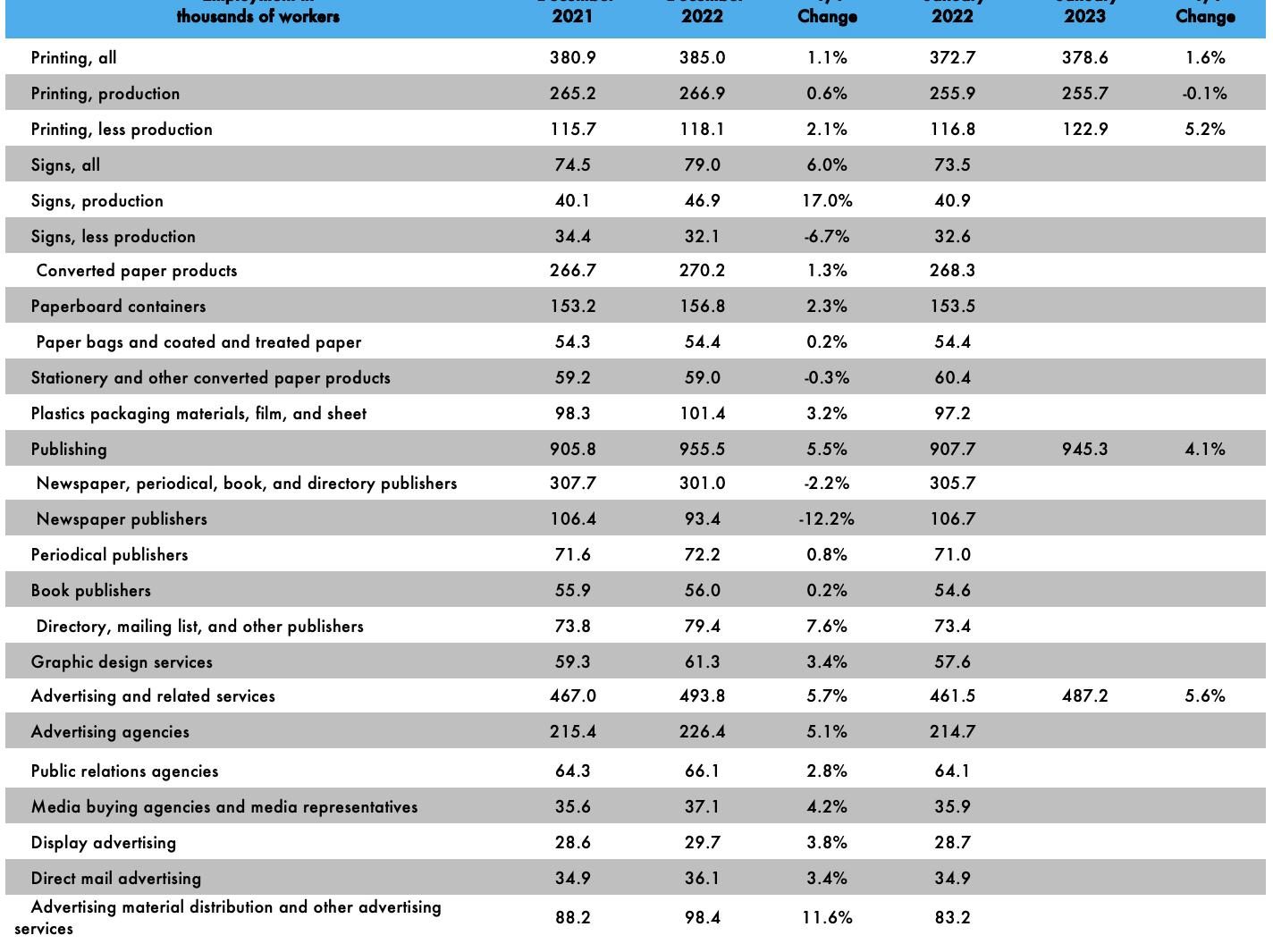
Publishing in general had a generally strong summer, but ebbed as the summer came to a close. Overall publishing em-
ployment was down -1.1% from December to January. Advertising and related services were down -1.3%.
You’ll notice that we added a number of other business categories to our employment table, which we will continue to track as we go forward. As you may recall from our tracking of the publishing and creative markets, the reporting of these segments lags a month.
For example, overall employment in the signage industry was down -1.1% from November to December, with sign production employment only down -0.6%.
Looking at some specific publishing and creative segments, from November to December 2022, periodical publishing employment was up +1.5%, while newspaper publishing employment was down -7.1%. Graphic design employment was up +6.2% from November to December 2022, and direct mail advertising employment was down -4.0% in November. PR agencies were up +10.0%.
As for January employment in general, the BLS reported on Feb. 3 that total nonfarm payroll employment increased by 517,000 in January, and the unemployment rate hit a record low of 3.4%. Meanwhile, November employment was revised up by
34,000, and December employment was revised up by 37,000, for a total upward revision of 71,000.
The U-6 rate (the so-called “real” unemployment rate, which includes not just those currently unemployed but also those who are underemployed, marginally attached to the workforce, and have given up looking for work) ticked up from 6.5% to 6.6%.
The labor force participation rate ticked up from 62.3% in December to 62.4% in January, and the employment-to-populationratio increased from 60.1% to 60.2%. The labor force participation rate for 24–54-year-olds also ticked up from 82.4% to 82.7%.
In January, the Bureau of Economic Analysis released its official estimate of Q4 2022 GDP, and real gross domestic product increased at an annual rate of 2.9%. Recall that in the third quarter, real GDP increased 3.2%.

Guesstimates for Q1 2023 are coming thick and fast, with Bank of America forecasting it to come in at +1.5%, Goldman anticipating +1.4%, and the Atlanta Fed’s GDPNow running with the bulls at +2.5%.
Speaking of the Federal Reserve, in February, the St. Louis Fed, which maintains the essential FRED database of all sorts of economic data, launched a new “Macro Snapshot” dashboard, which is designed to provide insight into the macroeconomic data economists and policymakers at the Federal Reserve Bank of St. Louis use to analyze current economic conditions.
It provides the latest data on GDP, employment, inflation and the financial markets all in one place. We’ve been playing with it for a couple of months for our Friday Data Slice’n’Dice Series.

Two months into 2023, the economy in general and the industry in particular are humming along nicely. The biggest issue of last year, inflation, looks to have peaked.
According to the BLS, the Consumer Price Index for All Urban Consumers (CPI-U) rose +0.5% in January on a seasonally adjusted basis, after increasing +0.1% in December. The biggest contributor was the index for shelter, which accounted for nearly half of the monthly increase. Core CPI rose +0.4%, and if you back out shelter, core CPI rose only +3.9% year over year.

By the time you read this, we’ll have February’s inflation numbers, so we’ll see which way the trendline is breaking. Fears of a recession seem to have been allayed for the time being, and there has been little talk of debt ceiling brinksmanship, so things look positive as we head into the spring.

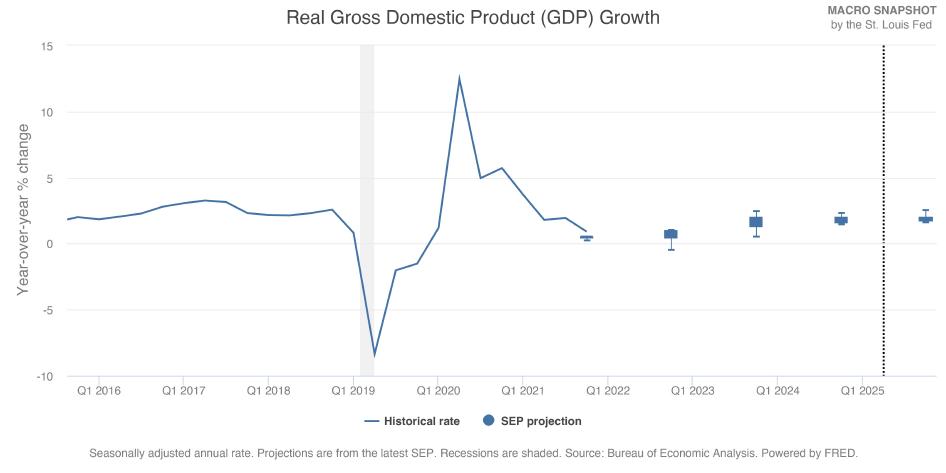

Drawing on six years’ worth of Print Business Outlook surveys, our “Tales from the Database” series looks at historical data to see if we can spot any particular hardware, software or business trends. This issue, we turn our attention to specialty printing—or any printing beyond traditional offset or digital commercial work.
These surveys form the basis of our annual “Printing Outlook” reports, the most recent of which is 2023. In every survey, we ask a broad cross-section of print businesses about business conditions, business challenges, new business opportunities and planned investments.

If we had been conducting these surveys between 2010 and 2015, it’s likely that “adding wide-format printing capabilities” would have been higher than 20% for at least some of that period. That was the “golden age” of expansion by commercial printers into display graphics.
In the mid-2010s, all the print businesses that were likely to
In our “Business Outlook” reports, we tend to focus (obviously) on the most recent survey data, occasionally looking back a survey or two to see how these items have changed in the short term. Plumbing the depths of our survey database can give us a better sense of how these trends have changed since the mid-2010s.
This is the wide format, display graphics, and textiles and apparel issue, so we rounded up a few opportunities and investments related to adding not only things like wide-format printing and textile printing capabilities, but also packaging as well as other types of specialty printing. Let’s see what history can tell us.
expand into wide format did, which is why the wide-format opportunity has not exceeded 10% since 2018.
What then do print businesses see as the hot new area to expand into?
It doesn’t appear to be any one thing; the choppiness of “adding packaging printing capabilities” suggests some ambivalence, although in 2021 it did chart the highest in the history of our survey.
Likewise, “adding textile/fabric printing capabilities” was cited as a business opportunity by 6% of survey respondents in our most recent survey.
We added “adding digital label/wrapper printing capabilities” in 2019, and it has been slowly climbing, as well as “adding specialty/industrial printing capabilities.” Although we will need to clarify what we mean by this, as we have discovered anecdotally that many print businesses and even equipment vendors think of packaging as industrial printing.
In terms of what print businesses are planning to purchase, flatbed UV wide-format printers have broken away from the pack, as vendors’ portfolios have expanded such that there is equipment available for virtually any productivity level or price point.
Solvent/eco-solvent printers aren’t the hot items they once were but investment has rebounded in our most recent survey, as has interest in dye-sub printers for fabric printing. They tend to track not far behind the perception of textile/fabric printing as an opportunity.


As for label and packaging printing equipment, digital label equipment seems to be where it’s at, although corrugated, folding carton and flexible packaging printing equipment all ticked up in 2022. We are curious how much of this is digital vs. flexo/offset vs. bespoke, so this is one topic we will have to drill down into further in our next survey.
Printers are still casting about for the next big market. Some are exploring packaging, some are exploring textiles, but digital label printing looks the most promising at the moment. Stay tuned.

The cover image is taken from a wide-format installation from Image Options. Image Options is a provider of surface imaging, display and visual communications based in Greater Los Angeles.

The “FINS” wall was printed using an EFI HS125 Hybrid Printer. For more information about Image Options, visit imageoptions.net.

• Choose from 4 holographic patterns: RAINBOW, MOSAIC, KSCOPE, and DESIGN510


• Add interest through the strategic use of opaque and translucent inks.

• Enjoy optimum ink laydown with multiple print technologies.

• Get products when you need them – all patterns in stock – 2 in pre-sheeted inventory.
• Take advantage of extra functionality for application instructions, coupon codes, and more with backside printable liner.
If you have been out in the world at all, you know that the number of surfaces to which graphics can be applied is only limited by the number of surfaces there are— which is to say that display graphics can be applied just about anywhere: walls, windows, doors, streets and sidewalks, 3D objects, vehicles—name it.
Despite the overwhelming variety of graphics applications, some general trends are emerging, and some older trends are becoming more important.
One new trend that FLEXcon has been seeing is a demand for prismatic or holographic films. FLEXcon has launched a new series of its PRISMcal self-adhesive, holographic metallized vinyl films, an updated version of the product line.
The new holographic films are designed to help display graphics providers create eye-catching static alternatives to dynamic digital displays (DDS).
“Static graphics have taken a big hit from digital displays,” said Jodi Sawyer, strategic business unit manager, retail and advertising for FLEXcon. “How can we make static graphics more experiential? So the goal with reintroducing these products is to add light, movement and refraction to bridge the gap between a digital display and a static graphic. It’s a way that print service providers can add some life and some differentiation.”
The PRISMcal line comprises 2.6-mil rigid vinyl films that are compatible with a variety of print technologies, including UV and solvent screen and UV inkjet. FLEXcon currently offers four prismatic patterns in 54-inch masters, which can be slit and sheeted to converter specifications, while two patterns are also available pre-sheeted to 100 27x20-inch sheets per box.
In the past few years, there has been something of a backlash against vinyl materials, which has been one of the drivers of textile-based signage, especially in Europe. So materials producers are looking to develop alternatives.
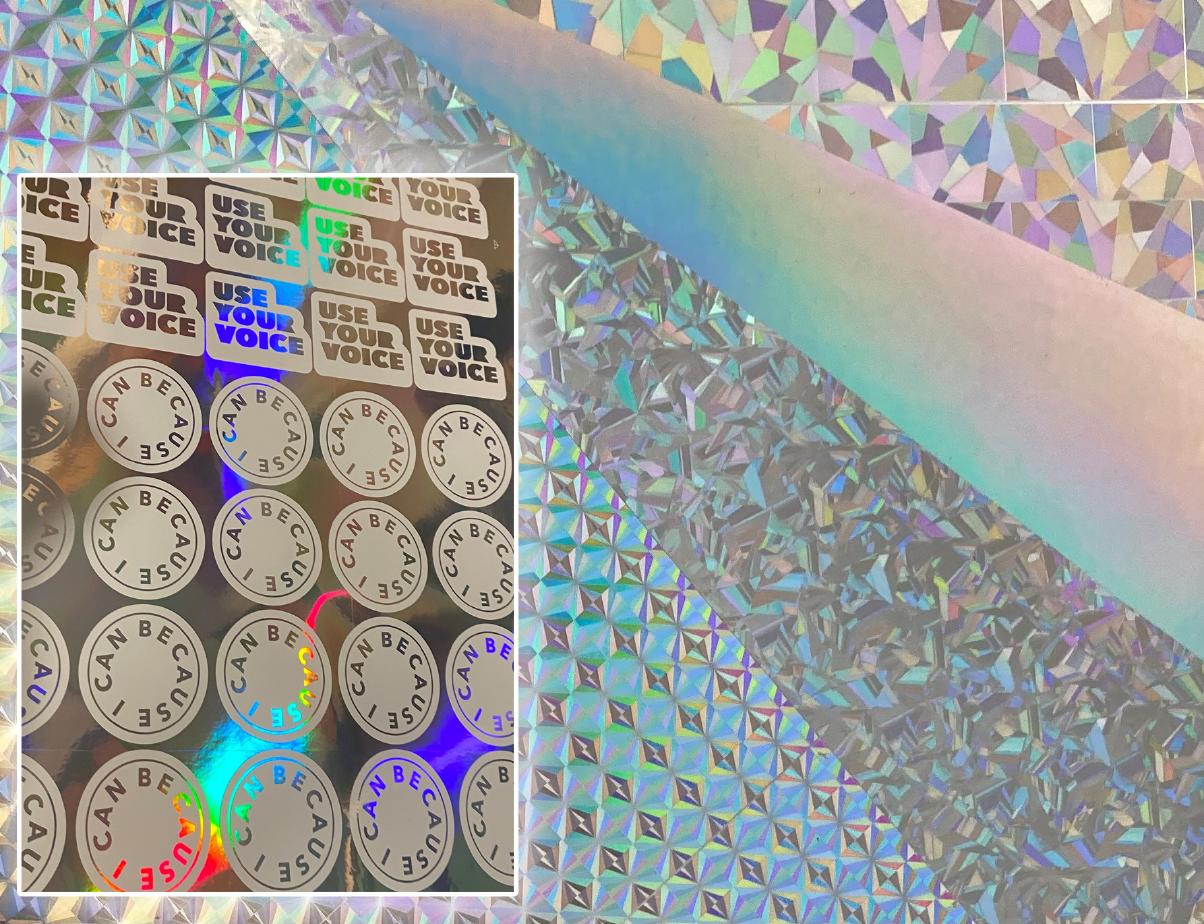
“Everybody just thinks vinyl is the worst and there are a lot of reasons why it’s not, but a lot of brands are specifying that they don’t want to use vinyl anymore,” Sawyer said.
So FLEXcon has launched its NEXgen five-year outdoor UV-resistant polypropylene film that offers an alternative to vinyl for both labels as well as display graphics.

“Wide-format printers are already starting to look beyond the applications they traditionally produce,” Sawyer said. “We see them expanding their reach into other markets such as durable labels and packaging, for example.”
Mactac is also seeing print service providers expanding their application range.
“We are witnessing them try to consolidate the print media that they are using—working on getting more applications and inkjet print flexibility out of the same roll,” said Nate Goodman, technical product manager for Mactac. “Multi-print media such as our REBEL product line has helped with this demand. Retailers and end users have also been asking for more sustainable products, such as free PVC options.”
Avery Dennison is also seeing customers expand the range of applications with a particular film.
“We are seeing customers find creative ways to use our material outside of their standard use,” said Alex Fox, product manager for Avery Dennison. “Some examples that I’ve seen are customers using our wrapping films or paint protection films, which may typically be used on a vehicle, used to wrap ATMs or elevators.
Avery Dennison just launched three new products in its advanced digital overlaminate (DOL) Max Series—DOL 1060 Max and DOL 1360 Max—along with DOL 6470, a new PVC-free luster finish overlaminate.

“The intent of launching the DOL Max series is that these laminates have an extended durability compared to our standard overlaminate series,” said Fox. “We’re really targeting customers in harsher-climate areas like Southern California or Colorado.”
Reducing the use of vinyl is a larger part of the sustainability picture, and manufacturers are striving to offer more sustainable
The new Avery Dennison DOL Max films provide horizontal and vertical durability for improved outdoor protection, especially in extreme weather conditions like hot sun, snow and rain.options, while at the same time not compromising on image quality and performance—a difficult needle to thread.
“Many end user retail customers are asking for non-PVC options that are driving new product innovations,” said Goodman.
Mactac recently introduced the Simply Sustainable lineup of polyester and polypropylene print media for window graphic applications.
“We’re seeing an uptick in sustainable substrate interest, anything PVC-free,” said Audrianna Manee, marketing manager for Ultraflex. “Consumers are looking for these alternatives, and now many companies are establishing rules and regulations to adhere to sustainable benchmarks.”
In 2021, Ultraflex launched its EcoVantage 100% PVC- and phthalate-free line of materials for outdoor advertising, POS, wall coverings and retail displays, and in 2022 expanded the line to a total of nine products.
“The expansions provide a solution for signage users looking for frontlit, backlit, blockout, mesh and wallcoverings,” Manee said.
EcoVanage substrates are compatible with solvent, eco-solvent, UV, latex and screen printing, and is available in widths from 54–196 inches.
“More printers and signage shops are leaning towards eco-friendly and recycled inks,” said Manee.
When we think of alternatives to vinyl, we usually think of alternate polymers, textiles or even paper. But aluminum is also a sustainable alternative to vinyl, especially for outdoor applications. AlumiGraphics, developed by FloorSignage, is one such substrate.
“We set out to make a product that was more durable, easy to
print, easy to install, all of that, and, in doing so, we just stumbled upon making a product that’s also sustainable or environmentally friendly,” said Micah Causey, vice president of business development for FloorSignage.
Available in both Smooth and Grip varieties, at end of life can be disposed with standard aluminum recycling.
AlumiGraphics are compatible with solvent/eco-solvent, latex and UV printers and because it’s aluminum, it can hold up extremely well in outdoor environments.


“It’s not affected by temperature swings or moisture so it’s a very durable product,” said Causey.
One unique application they are pursuing came from the company’s Australian distributor, and a few examples have started to turn up in North America as a program called Safe Route to School.
“It’s marking sidewalks that the school districts recommend children take to and from school, which are either the most visible or are patrolled by security or police,” said Causey.
FloorSignage has also found many other applications for its AlumiGraphics—including one floor-based variation of those “Class of 202X” celebration lawn signs.
“We now have all kinds of graphics that we do for schools with a football player’s name and number on a ground graphic that will be located at the entrance to the stadium,” said Jennifer Feucht, marketing for FloorSignage. “It was just another unique way to take floor graphics and use them in a school setting. It’s been very popular with honoring graduating seniors. And it’s such an easy product to install that typically moms, dads or even the students will take the product and install it themselves.”
FloorSignage’s AlumiGraphics are being used for a program called Safe Route to School, designed to guide schoolchildren to and from school.Indeed, it’s not just the visual appeal of graphics materials that are driving development of new products, but other factors like ease of installation.
We have been talking at great length these past few years about hiring difficulties—and that even includes professional graphics installers.
“What we are hearing is that there’s a shortage of skilled installers,” said FLEXcon’s Sawyer.
When a display graphics provider kits and sends out graphics to a customer, they’re not often going to send a professional installer. So graphics materials that are easy to install have become popular.
FLEXcon has added Air Egress Liners to its FLEXmark WR and WP products, designed for novice installers applying graphics to walls, windows, floors, counters, etc., primarily in retail locations.
Egress liners are not a new technology, but their advantage for newbie installers is that they allow a graphic to be repositioned easily during installation, and they help prevent air bubbles.
“They need to focus on something that’s going to make it easier to install, and it does it in a way that’s effective without adding a tremendous amount of cost to the product,” Sawyer said.
Other consumables manufacturers have seen the same trends.
Thus, Mactac has recently introduced its M-Dot Clear and M-Dot White, which provide dot-pattern adhesives.
“This allows for easy, bubble-free application and repositioning ability, allowing any novice to install successfully. Mactac has also worked with printer OEMs to ensure that products perform across many new ink platforms,” said Goodman.
On the other hand, Avery Dennison has been getting more requests for ease of removability.
“The time to remove a graphic can really make or break your turnaround time,” said Fox. “If it’s a fleet, removing it, putting on a new graphic, and getting it back out on the streets.”

FloorSignage’s most recent product is DriveOn Graphics, designed for streets, parking lots, garages, driveways and other such surfaces. It sticks to asphalt, concrete and bitumen and will not only hold up under vehicle traffic, but also meets international slip-resistance standards, so it’s safe for pedestrians as well.
“We’ve had people coming to us asking, ‘Can we put AlumiGraphics in the drive-through lane of a burger chain?’” said Causey. “Or ‘Can we put it in a parking garage or in a stadium parking lot?’ AlumiGraphics can withstand what is termed ‘rolling vehicle traffic,’ which just means the tires are going to drive over it. But as soon as the tire stops and turns, it can cause abrasion or tire shear and it damages everybody’s product.”
DriveOn Graphics, intended to withstand that abrasion, has been in development for seven years and was launched in April 2022. It has proven popular for personalized parking spaces, drive-through lanes and EV charging stations.
“This is a great way to have directional, instructional or promotional messages in a drive-through lane,” said Causey.
No matter where you or a customer want to apply a graphic, there is an appropriate material for that surface. Working closely with your consumables supplier or manufacturer can help you come up with the perfect solution that sticks.
FloorSignage’s
AlumiGraphics come in a Grip version that adheres to floors and outdoor surfaces— as
 JJ Trucking selected one semitrailer within their fleet of 25 and turned to Art City Wraps for the design, production and installation of a mission-driven, mobile billboard.
JJ Trucking selected one semitrailer within their fleet of 25 and turned to Art City Wraps for the design, production and installation of a mission-driven, mobile billboard.
Industrial-strength versions of Cutco precision kitchen knives only scratch the surface of how back-end finishing can create unique products and add value to wide-format output coming off of flatbed printers. From routers, milling bits, crease wheels and blades, to engravers, polishers and perforators — many tool options are available for cutters.
Matt Thackray, VP and GM of Kongsberg Precision Cutting Systems in America, elaborates on how today’s finishing systems go beyond cutting.
“They allow you to have a much more durable platform with higher horsepower spindles, which allows for complex (i.e. thicker/denser) materials to be cut with fewer passes,” he said. “On the digital cutting side, the customer’s ability to deploy vision registration allows them to cut non-standard shapes at a higher margin.”
While automatic tool changers are not new technology, their presence has migrated from the CNC (computer numerical control) routing world to multifunctional devices, For example, Zünd
offers up to eight different bits to set up cuts at different depths and for different tasks, said marketing manager Beatrice Drury.
Many customers are also not aware of the “thread milling” function within Kongsberg’s router range.
“It allows them to create threads for standoffs in one process versus secondary processes of tapping,” Thackray said. “This function creates added value and efficiency in the manufacturing process.”
ER2 Imaging Group VP and partner Gary Schellerer, Jr. likes the way Zünd cutters with routing capabilities work on thinner materials.
“These machines typically are belt-driven,” he said, with high-performance blade options that can execute “V” and upand-down “jigsaw” cuts. An air-cooled electronic oscillating tool (EOT) is ideal for processing materials such as honeycomb display board, thick cardboard and tough leather. Meanwhile, a driven rotary tool (DRT) is designed for cutting textiles reliably and economically with a motor-driven, 10-segmented blade. ER2 operators call the DRT their “pizza cutter.”
ER2 Imaging’s 75 employees are spreading out amid a big expansion as the firm doubles its production space this month to

68,000 square feet in Hanover Park, Ill., outside of Chicago. With more room now available, Schellerer, Jr. says he will be looking at the latest cutting technologies in April at the ISA Sign Expo in Las Vegas.
In addition to the Zünd cutter/router, ER2 also uses laser cutters for accurate precision on applications such as one-inch letters on plexiglass. Their machine of choice is manufactured by Trotec and features a 30x40-inch, welded bed.
Industrial CNC routers from MultiCam, Inc. (now part of Kongsberg) have been ER2’s “go-to” machines for cutting wood and thinner metals – for some 15 years. Also used in woodworking and cabinetry, the blades are cooled with oil. Routers are tools used to hollow out bits of wood, board, plastic or other surfaces. Like blades, router bits (think drill bits) vary in size and shape.
From basic, rounded corners to myriad other geometrical shapes, there is margin to be made in customized cuts on signage and point-of-purchase (POP) displays, according to Keith Verkem, senior product manager with Colex Finishing Solutions, Inc.
The OEM’s Sharpcut Digital Finishing System offers an interchangeable triple head with 14 different tools to finish everything from decals and foamboard to wood and dye-sublimation textile fabrics (using a cutting wheel).

“Software supports modularity, allowing users to pivot into other markets,” Verkem said, citing box prototypes as an example. Sharpcut features automation that simplifies operation.
“A combination of hardware and software allows users to ramp up quickly to excellent cut quality,” he said.
Fewer mouse clicks on the operating console are a breath of fresh air in this era of post-COVID labor shortages. These days, it’s all about taking human error out of the equation.
“After only three days of on-site training, the vast majority of our customers are producing sellable work,” he said. “They’re making money within a week.”
As far as the best ways to train operators, Kongsberg and MultiCam keep an open mind.
“As the workforce continues to evolve and the range of tools available to effectively train operators grows, we must remain cognizant that the new generation learns differently than 20 years ago,” Thackray said. “This provides us the opportunity to create learning modules and material that can be accessed via smartphones and tablets at any time.
“We still believe that hands-on training is most effective. but we have developed these specific learning modules and video training so that operators can learn on their own time, at their own speed, to increase effectiveness.”
In addition, the OEM also provides on-site training at its facilities in Miamisburg, Ohio, and Dallas -- at no charge -- to ensure that operators have time with the training staff and customize their on-site experience depending on user level.
Zünd builds training into installation cost and brings customers
to its Wisconsin training facility, where 10 or so demo machines are displayed.
“The most efficient way to train operators is to take them away from their production floors, where it can be difficult to focus because of all the distractions,” Drury said.
Sessions are tailored to each customer’s machine configuration and workflow.
Colex, Kongsberg PCS/MultiCam Inc., Summa, Zünd and other manufacturers pride themselves on equipment versatility. And, finding the right tool to accurately cut or route various materials is decided upstream in the prepress workflow.
“Advanced material-cutting libraries are provided for both Kongsberg and MultiCam end-user customers to reference,” Thackray said, “to ensure the right tool has been selected for the application.”
Prepress software connects directly to wide-format RIP developers, “such as Onyx Graphics,” said Verkem of Colex. “Much of the process is preset, using QR codes or barcodes to match job specifications with the proper cut-key profiles. Once these are mapped out by the prepress person, production manager or lead operator, the right blades are in there and ready to go.”
Driven by the material being printed, the number of pull-down
menu choices for methods/blades is limited as much as possible:
What are the blade options for cutting quarter-inch acrylic (transparent plastic)?
When cutting aluminum, a router is required – not a knife.
PVC plastic can be either knife-cut or routed, depending on die-line intricacy.
Drury agrees that holistic workflow is critical.
“Raw speeds and edge quality are important, but don’t just look at the cutter as a tool,” the Zünd marketer urges, looking instead as workflow automations including the “Internet of Things.”
“Using meta data to track jobs throughout the production process leads to greater transparency and facilitates automated picking and sorting,” she said.
A newer feature from the OEM is its Over Cutter Camera (OCC) system, which is an “intelligent” optical system for the fully automated digital capture of register marks. Mounted above the center of the cutter, either on a support beam or on the ceiling, the cam captures all register marks within the working area of the cutting system in a single image — automatically and in a matter of seconds.
“OCC allows for quickly matching cut to print,” she said. “This technology registers the print and recalibrates the cutting path as needed, for example on stretch fabrics that tend to distort. In the end, you need to be able to cut and route efficiently but also accurately.”
Two months ago in Utah, O.C. Tanner, one of the largest U.S. manufacturers of retail and corporate awards, rang in 2023 by installing a new cutting solution at its Salt Lake City headquarters.
Manufactured by Kongsberg Precision Cutting Systems, the X24 Edge digital machine is fitted with the MultiCUT milling unit, delivering 1kW of milling power and speeds up to 45,000 revolution per minute (rpm) for milling, contour cutting, routing, drilling and engraving.

“The BevelKnife Tool enables a 45-degree slanted cut for V-notching or single through cutting, while the Corrugated Crease Tool delivers perfect and distinct crease lines without perforation,” said Connie Adams, Kongsberg PCS territory sales manager. “With its specialty tools, the X24 Edge handles a wide range of applications, offering speed, power and the flexibility to add new tools for new materials, new applications or more capacity.”
Most importantly, perhaps, the table can evolve to keep pace with changing demands.
O.C. packaging engineer Daryl Leiser said that the ability to customize packaging to better meet customer needs is of key importance.
“With such versatile options, we are now able to cut paper, cork and plastic. Being able to customize our packaging has created significant cost savings, the ability to use more sustainable packaging, and as such we’ve enjoyed an increase in customer satisfaction.
“The versatility of the Kongsberg X Edge has meant we’ve not only been using the table for making samples and custom boxes, but also as a production machine,” Leiser said. “Half of the working day consists of production runs and the other half of making samples and running tests on new products.”
Thackray adds that, like O.C., most shops do not know what material they will be cutting from one day to the next:
“Having flexibility and modularity allows them to grow their capabilities and value as solutions providers, giving them the competitive edge to scale their enterprise.”
Additionally, volume may not be the only way to justify return on investment.
“Versatility and flexibility provide a platform to increase business due to the ability to handle a larger variety of products, which in turn creates more enterprise value,” he said.
When it comes to material-handling automation, robots are answering the call more and more. Zünd’s BHS150 Board Handling System “communicates with robotic devices that move boards onto the machine and offload and stack the cut product,” said Dury. “The system allows for a stack height of up to 1.5 meters, and the offload process is so smooth, there’s no need for bridges to hold the cut pieces in place
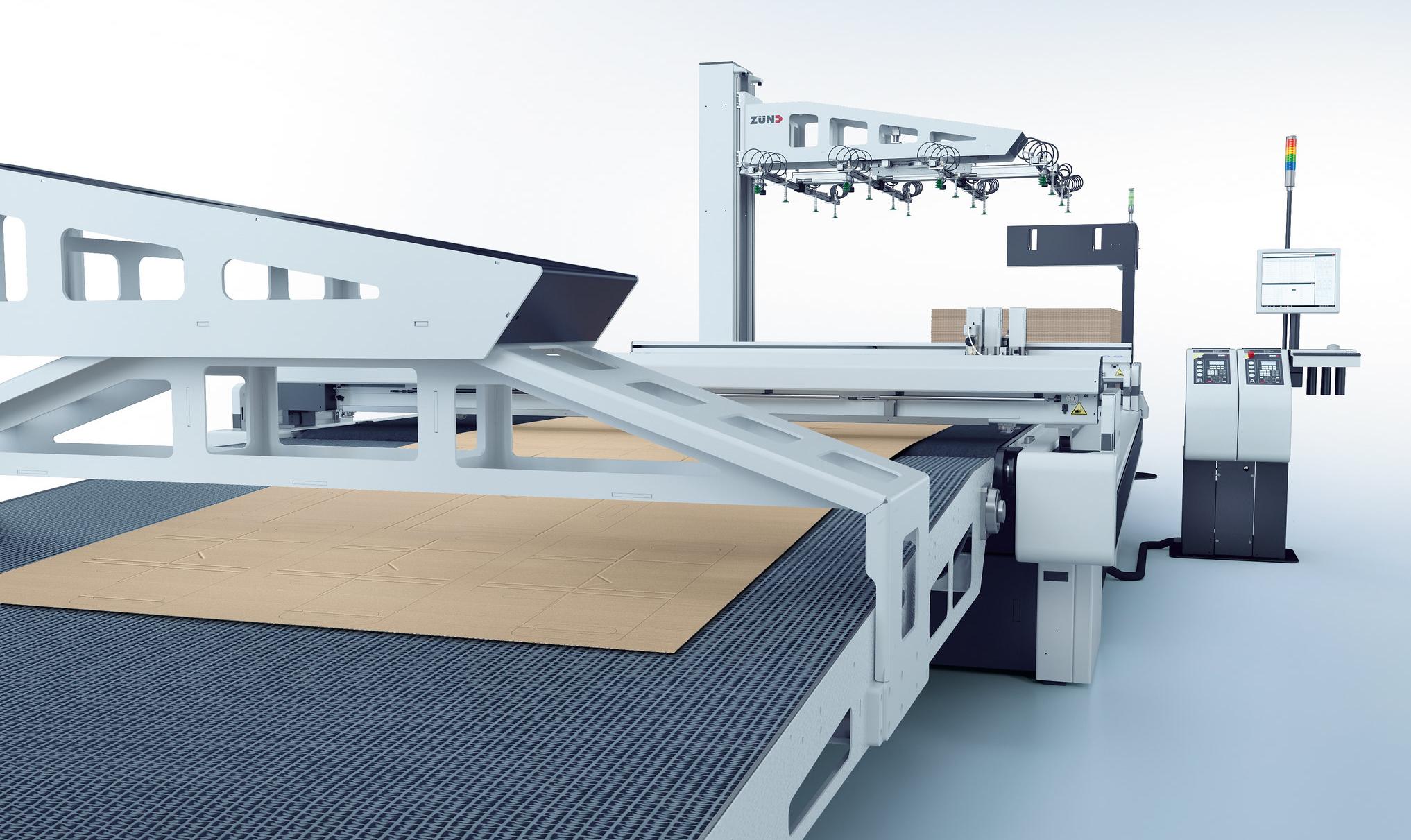
This past November, Zünd launched the Robot PortaTable 130, which enhances automated, material-handling productivity with movable, collaborative robots from Universal Robots/Teradyne.
These lightweight robotic arms do not require the safety cages associated with other industrial robots. They pick up cut pieces and sort/place them into predefined bins.
“Easy to move from one machine to another, the Robot Portable can be used wherever needed and essentially pull double (or more) duty,” Drury said, “which makes robotics even more cost-effective.”
The winner of this year’s FASTSIGNS/Wide Format & Signage Project of the Year is FASTSIGNS Eugene (Ore.), whose work for the World Track and Field Championships went the distance in the eyes of the judges.
This was the first time that the World Track and Field Championships were held in the U.S.—at Hayward Field in Eugene, Ore., July 15–24, 2022—and, as a result, the Oregon 22 organization was seeking to make a major statement with the graphics for the event.

There was also a time crunch—all materials needed to be installed within a seven-day window and removed within a fiveday window.
Adding to FASTSIGNS Eugene’s challenges were the high sustainability requirements for all the materials used for the graphics: they had to be either re-sellable, re-usable or recyclable.
FASTSIGNS Eugene owner Peter Knight-Sheen is a U.S. Army veteran and, like many FASTSIGNS franchise owners, comes from outside the sign and graphics industry.
In 2016, he was running a staffing business in San Antonio, Tex., which he sold and then bought FASTSIGNS Eugene in November 2016. The center had been doing well—and then COVID hit, which actually had an inadvertent benefit.
The event was supposed to be held in 2021, but the pandemic delayed it. The Championships, postponed to 2022, bought Knight-Sheen and his team some extra time to expand the FASTSIGNS facility.
“Whether luck or divine intervention, the way this whole thing came together was unbelievable,” he said. “There’s no way we could have pulled it off in 2021.”
Staff turned over during COVID, and in 2021 the center moved to a new 8,500 square foot facility, an upgrade from the previous location’s 1,800 square feet. They acquired a flatbed printer, a Colex cutting table and a bucket truck.
“Had we not done that, we would not have been able to do most of this stuff,” said Knight-Sheen.
Helping the process was AHM Brands, a design company that Oregon 22 hired to do all the design work. As it happened, FASTSIGNS Eugene had been working with AHM on other projects, so they had a working relationship that helped pull the project off.
Knight-Sheen estimates that they produced thousands of different signs for the event—banners (including more than 500 pole banners), window graphics, vehicle graphics, a 30-ft. scoreboard wrap and plywood wayfinding signage. There were also graphics for local hotels and the airport, the latter of which comprised an 8- by 10-foot Falconboard “selfie” backdrop.
Another unique component was a 60-foot long by 12-foot high “pallet wall” for the athletes’ village, which FASTSIGNS had to design and construct by themselves—a curve to the wall added to the structural challenges.
The event organizers had a commitment that materials used would comprise at least 30% renewables, and the event met that goal.
Knight-Sheen and his team are hoping to do more events like this, especially as the high visibility and success of the project was a great boost for FASTSIGNS Eugene’s reputation and has led to an influx of business.
“We’re now the go-to and have a reputation for figuring stuff out and making stuff happen,” said Knight-Sheen.




 Top: Door/window graphics and fabric wrap for Hayward Field vestibule.
Middle: Falconboard “selfie” backdrop at the Eugene Airport.
Top: Door/window graphics and fabric wrap for Hayward Field vestibule.
Middle: Falconboard “selfie” backdrop at the Eugene Airport.
The first runner-up in this year’s FASTSIGNS Project-of-theYear is FASTSIGNS of Syracuse (N.Y.) that won for work done for Gilbane Development/The Laurel, a student housing community in Syracuse.
The space was a historic building that had been renovated, and they wanted new graphics to liven up the space, as well as to appeal to Syracuse University students looking for housing.

This project mainly focused on the client’s leasing office in a different location with the goal of filling tenant spaces in a large multi-story building being constructed in the city.
FASTSIGNS of Syracuse designed and installed full-cover wall graphics that transformed the space into a branded location for The Laurel, including a greenery wall and neon-style signage.
To give some of the wall applications texture, the team used PVC with backer pieces to make graphics appear as if they were floating on the wall.
The project greatly enhanced the space, and increased traffic to their location.
Coming in third was FASTSIGNS of Lakewood (Colo.) for their rebranding project for Terumo Blood and Cell Technologies, a “global leader in blood component, therapeutic apheresis and cellular technologies.”
Rick Abercrombie, owner of FASTSIGNS Lakewood, has had a long, on-going relationship with Terumo.
“They’ve been one of our clients since I started back in the early 2000s at a smaller scale,” he said.
When Terumo moved to the Lakewood area, “it was a natural fit when time came for them to entertain this rebrand in updating their campus.”
The graphics installed throughout the campus included custom fabricated pieces, dimensional graphics and LED lighting. Several parts of the campus were updated using traditional wall vinyl along with raised dimensional acrylic panels, custom-painted PVC shapes, and reverse pan faces (a type of vacuum-formed dimensional signage). Other areas included custom fabricated aluminum wall art and a backlit LED timeline.
Abercrombie and his team worked with Terumo’s marketing team and spent time walking the campus and discussing options.

“They threw out some ideas that they had and then leaned on us pretty heavily to turn concept into reality,” said Abercrombie. “It was pretty intensive.”
One highlight of the project was a seemingly dimensional map that shows all of Terumo’s locations around the world.
“It was a combination of just simple wall vinyl and raised acrylic for the key,” said Abercrombie. “It’s flat, but the artwork was created with shadow effects to give you more of a dimensional look.”
Another element that wasn’t necessarily a challenge but required a lot of attention to detail was an “accordion wall.”
“The idea was to be able to look down the hallway and see one view and then the other way see another view,” said Abercrombie.
The trick was “to fabricate something that was going to be structurally sound, because it’s in a primary walkway.”

They also needed to make sure it didn’t protrude too far off the wall, that someone was likely to walk into it.
Abercrombie admits that he doesn’t get an overwhelming number of these kinds of major rebrands at this scale.
“If you get one or two a year, you’re lucky,” he said, “but they’re the type of thing that makes your job a little more exciting and challenges your team. Just the reward when you’re all said and done.
“There’s some pride in that part of it too. Every -
WhatTheyThink congratulates all the winners of this year’s
Katsuhiro “Jerry” Matsufuji, Canon U.S.A., Inc. vice president and general manager, marketing BICG, took on his current role in March of 2020, just as the pandemic hit. It’s only been in the last year or so that he has been able to get out into the field as pandemic-related restrictions were lifted.
We are pleased that we had the opportunity to interview him on a wide range of topics, from his background, to the latest Canon USA developments and a brief look into the future in this sponsored Executive Q&A.
Jerry-San, it is a pleasure to speak with you. You have been with Canon for quite some time, pretty much your entire career, in both production printing and office imaging, and in Japan, the U.S. and Europe. Can you share some of those details?
I joined Canon in 1988 in Japan and spent the first 10 years in sales, after which I took on marketing roles. I was in product marketing for the CLC (color laser copier) product as well as some other office color products that were released at that time. Looking back, it was a real advantage that I was able to be involved in color digital printing so early in its development. My first assignment to the U.S. was in a sales role for two years, then back to Japan in a product marketing role.
From 2004 to 2011, I served as the Product Marketing Director for the Imaging Systems Group at Canon U.S.A., Inc., where I led the team that launched the first generation of imageRUNNER ADVANCE products. In 2011, I moved to Canon Europe in a similar role, responsible for the entire European market for color and monochrome MFPs and single function printers. Then back to Japan where I spent several years as General Manager of Product Planning and Marketing for Canon Production Printing Systems, which included wide format and continuous feed products, finally taking on my current role, as you noted, in March of 2020. It’s been a pleasure to be able to go out in the field, and attend shows like PRINTING United, meeting in person with customers, dealers and partners.
So, in terms of the North American market can you talk a little about your sales and go-to-market strategy? For example, how much is direct versus dealer sales?
In terms of the office and production products, we rely heavily on our independent partners and Canon Solutions America, which is a wholly owned subsidiary of Canon U.S.A., Inc. In the production area, Canon Solutions America has a strong market presence and experience in commercial production toner and inkjet solutions and wide format. We also have a number of independent dealers who have a strong focus and dedicated resources to support the production products and continue to invest in expanding their services.
I understand you have been revamping the imagePRESS line, and one of the changes was rebranding so that the models now have a V in the product name. What does the V stand for?
It is not anything specific, but it includes things like versatility, variable, vibrant. We have a long legacy with the imagePRESS brand, and we really wanted to signal that this is more than just rebranding. It’s our latest generation of imagePRESS devices, not a refresh or just changing the skins.
The first product we launched in this family was the imagePRESS V1000 press, and it was really a ground-up development effort that filled a gap in our previous imagePRESS product line. Obviously, we leveraged some of the existing core technologies, but there is a great deal of innovation, such as a different fusing technology. So, it is really a different design.
The next launch was the imagePRESS V900 Series in December to replace the imagePRESS C910 series. This one did incorporate some of the recent technologies and advancements, but it is more of an evolution of the previous generation.
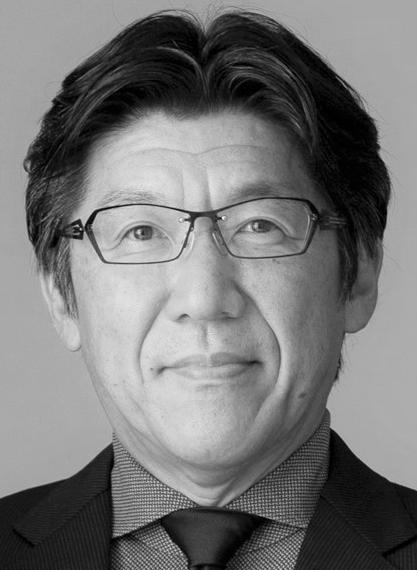
The other product you have just made commercially available is the V1350. Is that also a clean-sheet design?
There is a different fusing system, a more robust engine and a lot more. The average monthly print volume specification for that press over doubled compared to the imagePRESS C10010VP press as a result of the increased speed, higher durability and more robust design. That printer is also being sold by Canon Solutions America.
These devices are designed to help users with productivity as well. These engines have an on-board Canon-developed spectrophotometer that is designed to make it fast and easy to calibrate and profile the press as well as G7 verification. This is important with the current labor shortages and the difficulty of replacing highly skilled operators as they retire. We want the workflow to be as automated as possible so operators with less skill and experience can effectively operate these presses. And we have achieved that with the V-Series.
In terms of digital front ends for the V-Series, I’m assuming you offer a choice between PRISMAsync and EFI Fiery, as you have done in the past?
Yes. Some customers already have a Fiery workflow and want to stay with that as they acquire new equipment; others are used to PRISMAsync. So, it’s just very customer dependent as to which front end they choose.
The PRISMA family has many different modules and is the umbrella brand for our expanding offering of workflow solutions, printer applications or “tools” and print servers.
As you noted, the PRISMAsync print server is a digital front end for our imagePRESS devices and also our varioPRINT devices. PRISMA workflow solutions have been serving our customers for many years, and our goal is to broaden this support across our production and wide format portfolios.
For example, last year we announced the PRISMA XL suite with various applications for many Canon wide format products.
We are also moving many PRISMA solutions and applications to the cloud and making them tools that can help customers manage their production of compatible Canon and non-Canon devices. When it comes to Canon brand devices, we are able to provide a high level of integration and automation capabilities.
We also recognize that customers may have devices from manufacturers other than Canon in place. In these cases, we still allow for the integration and support of such existing investments, but the number and level of available features that we can provide in such cases will likely not equate to the same level as with the Canon devices.

As you migrate PRISMA to the cloud, what do we expect to see there?
One of the things we did first, both to make it easier for our customers to manage their PRISMA cloud applications and also allow our channels to manage their customer subscriptions and utilization, was to build a cloud-based platform called PRISMA Home.
For the customers, PRISMA Home is their “home” in the cloud, so they have a single view to manage their compatible PRISMA-enabled cloud applications.
One of the latest modules in PRISMA Home is PRISMA prepare Go, a simple job submission solution that replaces email job submission, and is designed to help streamline the preparation and management of print orders.
We also have PRISMAlytics Accounting that can be set up to automatically retrieve, consolidate and report on the actual job and print data from PRISMA sync-driven presses.
An upcoming cloud application will be PRISMAcolor Man-
ager that allows you to verify you are conforming to G7 or other print standards. It also includes tracking and reporting so you can see the history of how each engine is printing.
Thanks for sharing all these exciting developments. Is there anything else you would like to add before we close?
Thank you for the opportunity. I should also mention that we have not taken our focus off of monochrome printing; that’s still a big market for us. In fact, in February, we launched the next generation of the varioPRINT 140 series QUARTZ monochrome production printers with an average monthly print volume ranging from 800,000 to 2.3 million letter-sized impressions per month, available with speeds of 115, 130 or 140 impressions per minute.
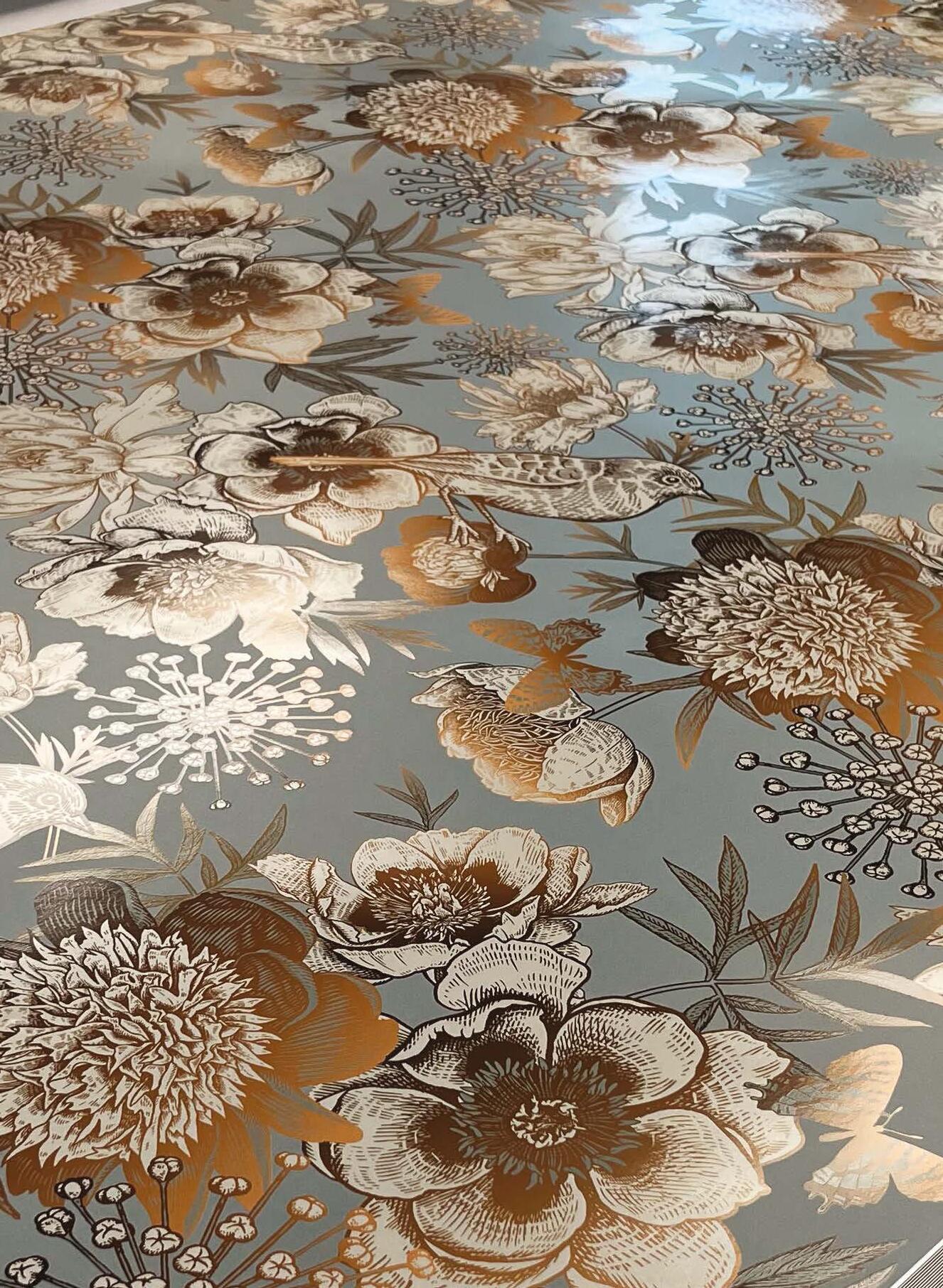

We are excited to now offer speed license upgrades either temporary or permanent; for example, during normal periods, 115 ipm might be sufficient. But during a peak month, they can order a temporary speed upgrade to 140 ipm for their peak period, and then drop back down to 115 as appropriate. I think that’s a pretty strong offering.
I should also add that we have stepped up the professional services we offer our dealers, to help them manage implementation, solution deployment and more. For example, with some of the PRISMA solutions, they can choose to outsource the implementation and customer support to Canon U.S.A., Inc.
We expect that many of these recent developments will also help us to continue to grow our production business and expand into new markets like labels and packaging.
SPOT GLOSS WITHOUT VARNISH: GET PREMIUM PRICES WITHOUT RAISING COSTS
With the FLXfinish⁺, the Colorado printer series allows Print Service Providers to command a premium price, while not incurring additional costs. Print gloss AND matte on the same print without a varnish or additional consumables.

The Colorado printer series, there is nothing like it!
• Make wallcoverings and murals stand out

• No varnish, no additional steps, no extra consumable costs
• Increase profits, sell premium quality with no additional costs
BE INSPIRED — VISIT US AT ISA SIGN EXPO BOOTH #2638
SCAN THE QR CODE TO GET FREE FLXFINISH⁺ WALLCOVERING SAMPLES


Let’s start with a review of what is meant by carbon capture and storage (CCS).
According to the International Energy Agency, CO2 that is extracted directly from the atmosphere can be “permanently stored in deep geological formations, thereby achieving carbon dioxide removal.” The stored CO2 can be used in food processing (think carbonated water or dry ice), as part of the production of synthetic fuels, as well as in the textile industry.
“There are currently 18 direct air capture plants operating worldwide, capturing almost 0.01 metric tons of CO2/year, and a 1 metric ton CO2/year capture plant is in advanced development in the United States,” according to the IEA. “In the Net Zero Emissions by 2050 Scenario, direct air capture is scaled up to capture almost 60 metric tons of CO2/year by 2030. This level of deployment is within reach but will require several more largescale demonstration plants to refine the technology and reduce capture costs.”
Carbon can also be captured directly from factory smokestacks. The IEA believes carbon removal will play a key role in the transition to Net Zero, but it is expensive and not yet up to scale. Basically, it is only one piece of the puzzle. An important one, but not a silver bullet.
Interestingly, the first carbon capture project was established in 1972, according to CNBC reporting. In this case, carbon dioxide was pumped into an oil field to help oil companies retrieve more oil from the ground.
Enbridge Carbon Capture and Storage, is another project be -
ing undertaken by a fossil fuel company based in Calgary, whose primary products are liquid pipelines, natural gas pipelines, gas utilities and storage, and renewable energy (although they don’t specify what portion of their work is in the latter).
The company positions itself as “a bridge to a cleaner energy future.” It is not clear to me whether this is truly an end point vision or a greenwashing attempt at changing their market perception. Let’s hope it is the former.
“As countries like Canada aim to achieve net-zero emissions by 2050, the capture and permanent underground storage of carbon dioxide (CO2) is being touted as a vital component of global efforts to contain those emissions from heavy industrial processes, including power generation, cement production and conventional energy production and refining,” according to the company. “In an integrated CCS solution, instead of CO2 being emitted into the atmosphere, it’s captured as a gas at the emitting facility, compressed and then transported via pipeline to a strategically located storage hub, where it’s injected to be safely and permanently sequestered within deep underground geological formations.”
One sign this may be a truly honest approach to decarbonization: The company is building an open access hub, the Wabamun Carbon Hub, near Edmonton, with a goal of avoiding about 4 million tons of atmospheric CO2 emissions annually. It’s a start, but only a drop in the bucket.
The IEA forecasts that nearly 7 gigatons per year of CO2 would need to be captured by 2050 to meet global net-zero tar-
gets. We are nowhere near that, and operations are not scaling up fast enough.
Part of the reason for that is cost.
“[CCS] is expensive, and until the cost of releasing carbon into the air rises, there’s little economic incentive to use it,” according to the CNBC report.
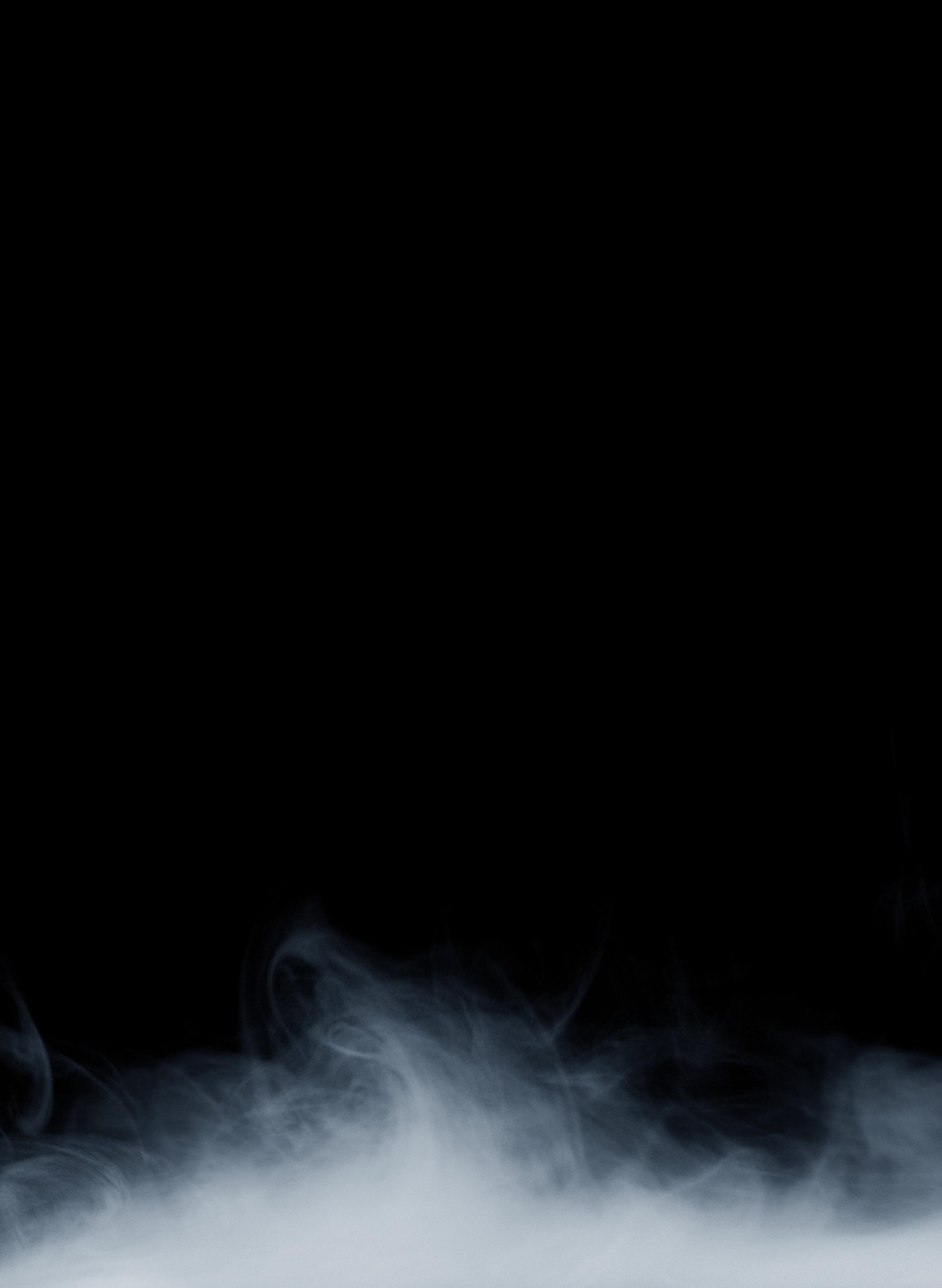
Another method of carbon sequestration is planting more trees. Trees not only consume carbon dioxide but also release oxygen into the atmosphere through photosynthesis. Trees are being planted all over, of course, but are they being planted and maturing faster than existing trees are being taken down? Take the Amazon region in Brazil as an example. And not a good one.
Plus, trees have other benefits. They can produce food and other sustainable materials such as Kapok. They help prevent erosion and can provide shade for regenerative agriculture.
Mechanical tree farms are another potential solution. Weird, huh? As yet an unproven concept, perhaps it can take advantage of land not suitable for agriculture or human life (think: deserts).
In a Sustainability Times article, developers in Ireland and the U.S. claim one tree is 1,000 times more efficient at capturing carbon from the atmosphere than natural trees—and they say they’re ready to start scaling up the model to eventually create tree farms.
Not particularly attractive, but if these farms can be created on otherwise unusable land, it’s a distinct possibility it can help us – assuming they can scale fast enough and that it actually works as promised.
“The idea isn’t to remove carbon so that global societies can
continue business as usual, though,” according to the article. “The goal is to use the technology in line with circular economy principles, providing carbon-based products, like fertilizers needed in agriculture or the carbon needed for the beverage industry. The captured carbon also may help to reduce the outsized carbon footprint of cement, steel and other industries.”
Still not a silver bullet. And we need incentives to make these investments. A carbon price would be one way to create those incentives, by taxing plants on whatever CO2 enters the atmosphere.
“If you now start looking at carbon prices and you have a pretty high price, that will make it more affordable to go to higher capture percentages,” said MIT’s Howard J. Herzog, a senior research engineer.
The MIT Climate Portal describes carbon pricing as “a policy tool to lower emissions of carbon dioxide (CO2) and other greenhouse gases. Emissions are produced when fossil fuels are burned to do things like make electricity, fuel vehicles, make materials and products, and heat and cool homes. These emissions are the main cause of climate change, resulting in flooding, sea level rise, drought, heatwaves and other costs to society.
“Currently, the public bears the costs of these impacts. The goal of carbon pricing is to shift the responsibility for these costs to those who produce the emissions. When producers and consumers have to pay for each ton of CO2 they emit, they have an economic incentive to shift away from fossil fuels, improve their energy efficiency, and invest in low-carbon technology.”
We also came across a watchdog organization, Food and Water Watch, that is in strong disagreement with this approach, calling it a mirage and a fool’s errand. It depicts CCS as expensive, energy intensive, and actually increasing emissions due to the large amount of energy required to power carbon capture. It also cites risks of failure during injection, or a blowout that could result in a release of large amounts of CO2.
Friends of the Earth cited an event in 2021 that occurred in Yazoo County, Miss., a largely Black community with 34% poverty, noting.
“A pipeline carrying CO2 for enhanced oil recovery ruptured and exposed the community to high concentrations of carbon dioxide, requiring area residents to seek medical treatment. The rupture also killed significant amounts of plants and wildlife in the area.”
Is the fact that much of the support for CCS comes from fossil fuel companies and supporters just another example of greenwashing? Or is it really a key component of getting to Net Zero?
This reminds me of Big Tobacco, and the cost to human lives of the falsification of data that occurred. In 2006, the American Cancer Society and other plaintiffs won a major court case against Big Tobacco. Judge Gladys Kessler found tobacco companies guilty of lying to the American public about the deadly effects of cigarettes and secondhand smoke.
I personally can’t rid myself of the feeling that this is Big Tobac-
co all over again, and Big Oil is putting up a big smokescreen –loaded with CO2, by the way – to preserve their business model. Not all fossil fuel companies are bad. But there sure is a lot of greenwashing going on.

Meanwhile, just as a lot of people stopped smoking and the lies came out, affecting tobacco revenues, there does seem to be some impact on fossil fuel.
Revenues sourced from a Semafor article states that “BP cut its projections for oil and gas sales over the next decade. The war in Ukraine will drive countries to pursue renewable energy, and the energy shock will damage economic growth and hit demand, the company said in its annual report. It projects a global demand in 2035 of 93 million barrels of oil a day, 5% down from last year’s forecast, while its natural gas forecast was down 6%. It means global carbon emissions will peak this decade, several years earlier than previously anticipated. Even under the new forecast, though, the world is falling short of a 2050 net-zero target.”
I worry about the future of my grandchildren, and the human race in general. To think that we have been talking about the environment and sustainability in one form or another since the 1960s and before, and only now, as we hit a crisis point, are we trying to take action, makes me very sad. One can only hope that institutions like MIT, The Carbon Trust, and others that are working hard toward a faster resolution of the effects CO2 has on our health, our economy, and dare I say it, the future of the planet – will spur faster action that will ensure a safe future for our children and grandchildren for millennia to come.
Decarbonization - carbon capture and storage - using fan and filter that separating atmosphere air into fresh air and pure CO2 mixed with water.

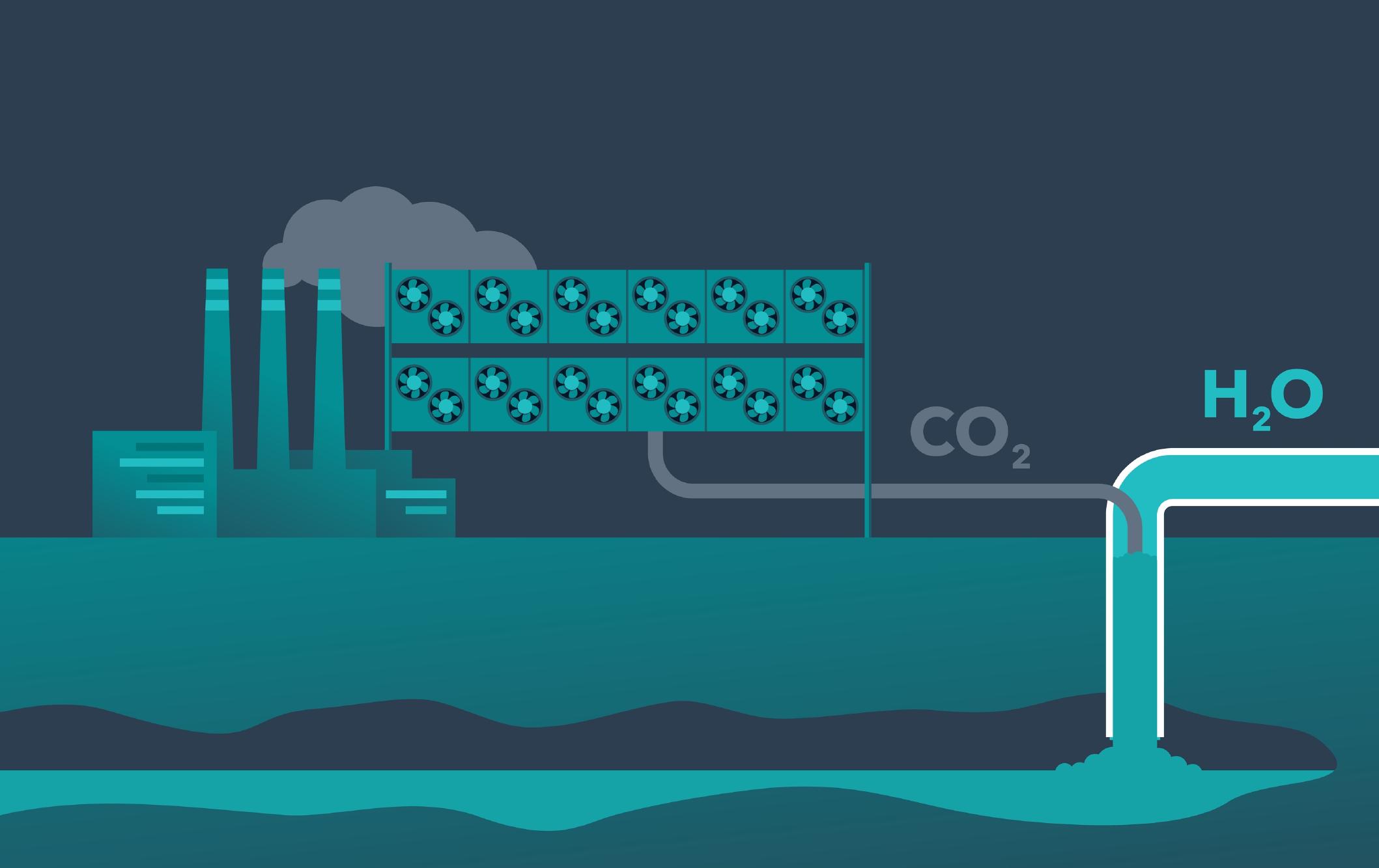
For the first time since before the pandemic, the ISA International Sign Expo is heading to its West Coast home at the Mandalay Bay Convention Center in Las Vegas, April 12–14. The Sign Expo is ever-evolving, and this year’s event will boast some new features, as well as some recurring favorites.

Last year, ISA introduced the Fabrication Experience, in which teams compete to construct a lightbox or some other element of traditional signage. This year, the Fabrication Experience has expanded to three contests.
“These are all hands-on, interactive opportunities for attendees to build things with experts leading the sessions,” said Iain Mackenzie, ISA’s VP of meetings and events. “No experience is necessary. It’s totally free, but participants have to sign up in advance. It’s a chance to have a little bit of fun, learn about the products that are out there, and win a little bit of money.”
The Fabrication Experience is complemented by the long-running Wrap Experience, a vehicle-wrapping contest.
Other “zones” on the show floor include the Education Zone, expert-led sessions presented by exhibitors, and the Business Zone, a meeting space on the floor where attendees and exhibitors (or some combination thereof) can have private meetings.
“It’s an extra opportunity on the floor, so people don’t have to leave and go find a quiet space,” Mackenzie said. “They can
meet on the floor and get their business done face-to-face, which is the essence of what the trade show is all about.”
Another popular feature is a kind of “speed-dating” event for national and local sign companies: ISA Install. This unique event, which sold out last year, brings together national sign companies and connects them with local installers for potential business partnerships.
This year, ISA is adding an additional networking component, as well as expanding into different markets, such as wide-format printing, which they are “beta testing” at the event.
“ISA Install is amazing for the electrical signage side of the industry, but we realize that there is a whole need out there for vinyl installers and other wide-format graphics installers,” said Alicia Auerswald, International Sign Association (ISA) SVP strategy and marketing.
ISA has also expanded the number and scope of pre-conference “bootcamps,” including:
The Digital Signage Workshop by Sign Builder Illustrated (SBI), will focus on navigating sign codes and regulations pertaining to dynamic digital signage installations.
Several Make It Happen Signage Bootcamps, led by Make It Happen’s Sam Armstrong, Harbinger Sign’s Mike Lev, and inSIGNia Wholesale’s Wendy Graves, provides a detailed overview of both sales and production techniques. One in particular is dedicated to illuminated signage, which has become a hot topic in the sign industry.
Business Bootcamp for Wrap Professionals by Avery Dennison with Justin Pate and John Deuver, is designed to help wrap professionals master business functions.
Other education sessions cover topics like ISA’s advocacy programs, which help signmakers navigate the often byzantine world of sign regulations.
Also returning is Women Leading the Industry (WLI), an initiative launched by the International Sign Association and Sign Builder Illustrated, which works to inspire and empower women in the sign, graphics and visual communications industry.
Thursday evening will include a tour of Las Vegas’ Neon Museum, and of course there is the return of ISA ROCKS, the industry party, to be held this year at the Luxor pool.
“Being back in Vegas has really created a great vibe for this event, not only from the exhibitors, but also attendees," Auerswald said. "We’re super-excited about that.”


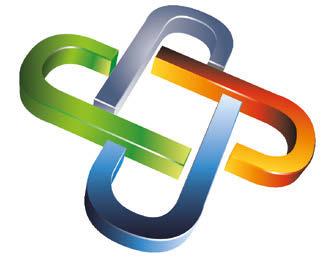




Things seem to be shaping up nicely for 2023, with PSPs expressing a renewed focus on growth and receding supply chain pressures. But what about the wide-format segment of our hard-hit industry? How were they impacted by recent paper shortages?

Over the pandemic, more and more printers expanded into the wide-format space, feeding a high demand for health and safety signage, amidst a growing inability to source paper. Today, you’d be tough-pressed to find a printing company that doesn’t offer some sort of wide-format solution, either in-house or outsourced.
Although it wasn’t talked about nearly as much, these printers were struggling for sign-making substrates, including base materials and vinyls.
“Very few printers just do wide-format anymore. Tons of PSPs were experiencing cross-vertical issues,” said WhatTheyThink Managing Editor, Richard Romano.
Those who “saw the light,” recognized the business growth potential when there were fewer barriers to entry. They invested (and continue to invest) in the equipment, technology and resources at the right time.
Though the wide-format segment of our industry began in the 1950s, new growth opportunities continue to emerge. Today, competition in the space is fierce. While not the “hot new application” it once was, there is money to be made.
Here are a few ways to expand your wide-format capabilities - and your RO.
Breaking into new and emerging markets is generally a good path to success – especially when you already have a solid foundation in place and market to support. This certainly applies to PSPs with large format capabilities.
For example, interest in textiles suggests printers are starting to see the gold lining. Printing textiles on wide format equipment is especially hot in the events space. It’s easy to fold, easy to print (and order) on demand and lighter to ship.
Do you offer roll-fed solutions? Think about how adding a flatbed could impact your bottom line. Or how customizing your cutting tables to match your press capability gains efficiency with the cutting and finishing processes.
TIP: If you’ve already invested in producing signage, consider how adding textile printing, flatbeds or custom cutting tables saves you time and money.
As a wide-format printer you should be happy to know that according to U.S. Census data, there still are a large number of retail businesses being approved each month – it is a massive vertical. And what do new businesses tend to need most? A lot of large, branded signs and displays - both indoor and out – including: Brand, office identity and directional signage, wall murals, privacy screens, lawn signs, banners, step and repeats, table throws, wall murals, floor graphics
TIP: Consider targeting new brick and mortar businesses, because it’s as simple as you have what they need – even if they don’t realize it.
It’s no secret that automation is critical to the health and growth of your print business. Re-entering data multiple times throughout a job’s life, or having to re-print a job order when a change is
made, hinders productivity and ultimately stunts business growth. There are better ways for your production team to spend their time at work.
Wide-format is no exception; development of new technologies and solutions specifically for this print industry segment is on the rise. Moreover, web-to-print/e-commerce solutions are finally becoming feasible for wide-format shops. Quotes, job submissions and templated purchases can flow efficiently with minimal touch points. This offers the potential to automate baseline business tasks, which translates into more time for staff to focus on the bigger, more bespoke jobs coming in.
TIP: With automated processes in place, the workflow becomes smoother, errors are reduced, communications are improved, and ultimately productivity (and growth) increases.
At its core, planning for growth involves spotting the trends –things like finding new applications, new markets and new ways to increase efficiency. More importantly, you must have a handle on the critical areas of your business, including:
Where most of your dollars are being made
What your clients as asking for
How you complement their needs
Where you add value to your customers’ business
Where your production bottlenecks occur
Where most of your dollars are being made
The length of time it takes for a customer to go from lead to opportunity to client
… and so on.
With these points covered, you can then start to get into what new applications make sense for your business, where to automate them into your workflow, what new markets to target, what new equipment to purchase, and what you should consider bringing in-house - to generate a bigger bottom line.
Let’s also not forget to make sure your sales team is properly armed with the tools and technology they need to find – and close – more business. For example, if you have a great CRM but it’s not connected to your MIS or W2P systems, then the greatness is voided as you bleed efficiency and dollars.
TIP: Take a look at whether your systems and software are integrated with each other. And please – make sure your data is clean!
Equip your sales force with consistent and cohesive messaging and arm them for success. After all, they are your front line. Ensure they know who your buyers are and how they make their buying decisions, or they’ll be shooting blanks. Primed with a messaging playbook, your sales force can spend more of their time finding and deepening customer relationships, and less of their time scrambling for new ways to answer more questions.
Having an open line of communication with your sales team is critical, especially in the early days as you refine your large-format print menu. Knowing what’s working and what’s holding them back will help you make the right business decisions at the right time – from pricing to inventory management.

If we’ve learned one thing over the last few years, it’s that anything can happen with little word or warning. When a crisis hits, whether it’s financial, security, supply chain, health or otherwise, those without a plan are weakened and left scrambling. Those with a plan are in a position of strength. That’s exactly what happened when wide-format PSPs pivoted, recovered and thrived in the aftermath of the pandemic.
This year will surely present its share of challenges. Overcoming them will come down to spotting the trends, identifying where growth is possible, breaking into new markets, trying new application areas, and improving levels of efficiency and productivity. But it will also come down to keeping a close eye on ways to achieve a higher level of productivity, the health of your revenue streams, your arsenal of sales and marketing tools, and how prepared you are to weather the next storm. Nonetheless, sentiments are positive, and all signs point to a strong 2023.
COMING THIS MAY













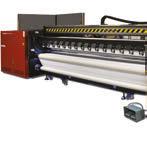
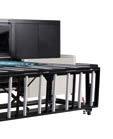







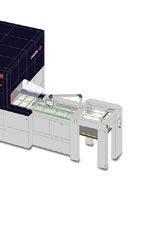


Our 2023 Technology Outlook series and online resource guide is designed for attendees to quickly learn about new innovations from industry analysts and thought leaders.






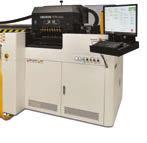



Embellishment is certainly a hot topic, but what does it really mean in practice? What is its scope?
Here we have compiled an overview of the major (and some minor) types of embellishment across the board of production processes, from analog to digital, narrow format to wide, and most things in between.
By embellishment, we mean adding value and visual impact by the application of foil and shimmer effects, varnishes and coatings; and pattern cutting of shapes. These may complement printed images, or some might be used on their own on plain substrates. These are very much high level overviews of each category, so there’s plenty of scope to dig deeper for yourself if you want to.
These are effects that mainly create reflectance and shimmer, through the application of special layers. Although metallic and diffraction effects are what most people think of first when it comes to foiling, there are all sorts of effects possible, that would be difficult or impossible to procreate with normally printed inks.
As the FSEA (Foil Stamping and Embossing Association) points out in its Designers Guide:


“Stamping foil is available in a wide range of colors, finishes and effects, from marble, snakeskin, imitation leather, pearls, wood grains, and geometric patterns to holograms, pigments, metallics, and subtle tints, in matte and gloss finishes.”
Aluminum-based foils are also particularly suited to recycling processes, as the metal is easy to separate, unlike some foiled boards that have a PET plastic layer too.
What’s so nice about it is that you don’t have to spend big dollars to get into the game. Though you can, if you can justify the outlay to get higher throughput and larger formats.
There are many ways to achieve foiling effects. A lot of it depends on your requirements. Do you want it on millions and mil-
lions of boxes, say for something that’s going to be distributed through Walmart? Or something that will be one-off/personalized, or for ten-, a hundred-, a thousand-off?
There are different applications for different types of technologies, and different finishes for different types of applications. You need to find out what your customers really want, what you can sell them, and how you can really monetize that with high levels of value.
Bobst, Brausse, Heidelberg, Gietz, Kama, Kluge, Saroglia, SPM Steuer, Therm-O-Type
Foil is really one of the original embellishments, dating back to precious materials, including gold leaf applied to illuminated manuscripts. In its analog form, it needs metal die stamps, made from either etched magnesium alloy, brass or copper, which can also give beautiful, embossed effects at the same time.
The process was mechanized and sped up with the development of hot foil stamping presses, using heated dies and ribbons of foil material on a carrier film with a heat-activated adhesive layer. Without the foil, you can use the same die stamps to get blind embossing, either for decorations or for the wonderfully
functional Braille information.
Originally foil stamping machines were usually modified platen presses, typically the little Heidelberg windmill platens found pretty well everywhere, or the larger format types used for die cutting and creasing. Letterpress flatbed cylinder presses are also often still used for both foiling/embossing and cutting and creasing.
There are also some big, new-build, dedicated high-end foiling presses, such as the Bobst MasterFoil and ExpertFoil.
Compact Foilers, Eagle Systems, Heidelberg, Sakurai, Vinfoil
A comparatively recent introduction is cold foil, where an analog litho or flexo printing unit applies an adhesive fluid rather than colored ink, and a foil-carrying film is brought into contact with it. The foil peels off the carrier and adheres to the substrate. Cold foiling can be run in line with very high-speed presses if needed.


There’s no raised die and no heat, but no embossing either. It’s particularly popular for packaging, and all the big press manufacturers offer cold foiling units, either bought in or developed in-house.
If the cold foil unit is first in line and you apply a silver foil, then you can overprint it with color to get pretty much any metallic color in the palette – gold, emerald, ruby, sapphire and all shades in between.
Some cold foilers can also create Cast and Cure, a popular effect in luxury packaging where a microtextured film is pressed into temporary contact with just-cured UV varnish, to emboss it with a diffracting surface effect.
Sakurai has a relatively new screen printing process that lays down an adhesive on which foil is applied.
Suppliers
Wide range of thermal laminators
Film lamination can be used to apply a variety of finishes and effects, either on top of printed substrates with some degree of transparency, show-through, or as a base layer that can be printed on by compatible inks.
Over-lamination film effects include leather, linen, grit or soft touch textures, Fresnel lens, diffraction, holographic, scuff-proof or dry erase. Base layer laminates might include metallics, soft touch, diffraction, textures, fluorescents etc.

Digital technologies have opened up the really exciting potential of instant short run or variable-image foiling, with no waiting time or outlay for metal dies to be made.
laminator, and the adhesive on the foil is activated and transfers on top of the toner image.
This process is sometimes called Sleeking, which is actually a trade name of Nobelus for its range of foils with adhesive that’s activated by heated toner in a thermal laminator.

Some suppliers have developed clear laminate film that can accept toner on top (check that your digital press is compatible however – a relatively low fusing temperature is normally needed). This means that you can print a sheet in full color, then apply the clear laminate as a protective coating, then run it through the printer again for the embellishment image, and finally run it through the foil-equipped laminator.
Kurz, Konica Minolta, Nobelus, Foiltech, most other laminator makers
The first, simplest and cheapest of these digital processes date back to the 1980s, when dry toner photocopiers were becoming common. Putting a toner-printed sheet into an oven heated up the toner far more than the underlying paper, so if you then pressed a hot foil film onto it, the printed toner image activated the adhesive, and the foil transferred.
Even with a copier you could create one-offs, or with a bit more effort, personalized foiling for certificates. If you want normal print alongside the foiling, you add that with a second pass through the toner printer.
Toner transfer systems are still available at modest prices right down to entry level, though there are also some faster, larger format machines at higher prices. For instance, Kurz supplies highend sheet-fed machines called DM Smartliner to do this on dry toner, or HP ElectroInk, running at up to 3,100 SRA3 sheets per hour (max sheet size is 390x660mm), or the B2 LuxLiner running at over 2,000sph.
The same principle is used by foil-adapted thermal laminators. Today most laminator makes have a foil film feeding and rewinding option, with one or multiple ribbons that can be positioned across the width of the machine. The toner-printed sheets and the film ribbon are brought into contact in the heated rollers of the
If you look in the back of your shop right now, you could probably do this toner-foiling off the bat. It’s like low-hanging fruit that lets you get a taste for the embellishment world with stuff that you probably already have.
Suppliers
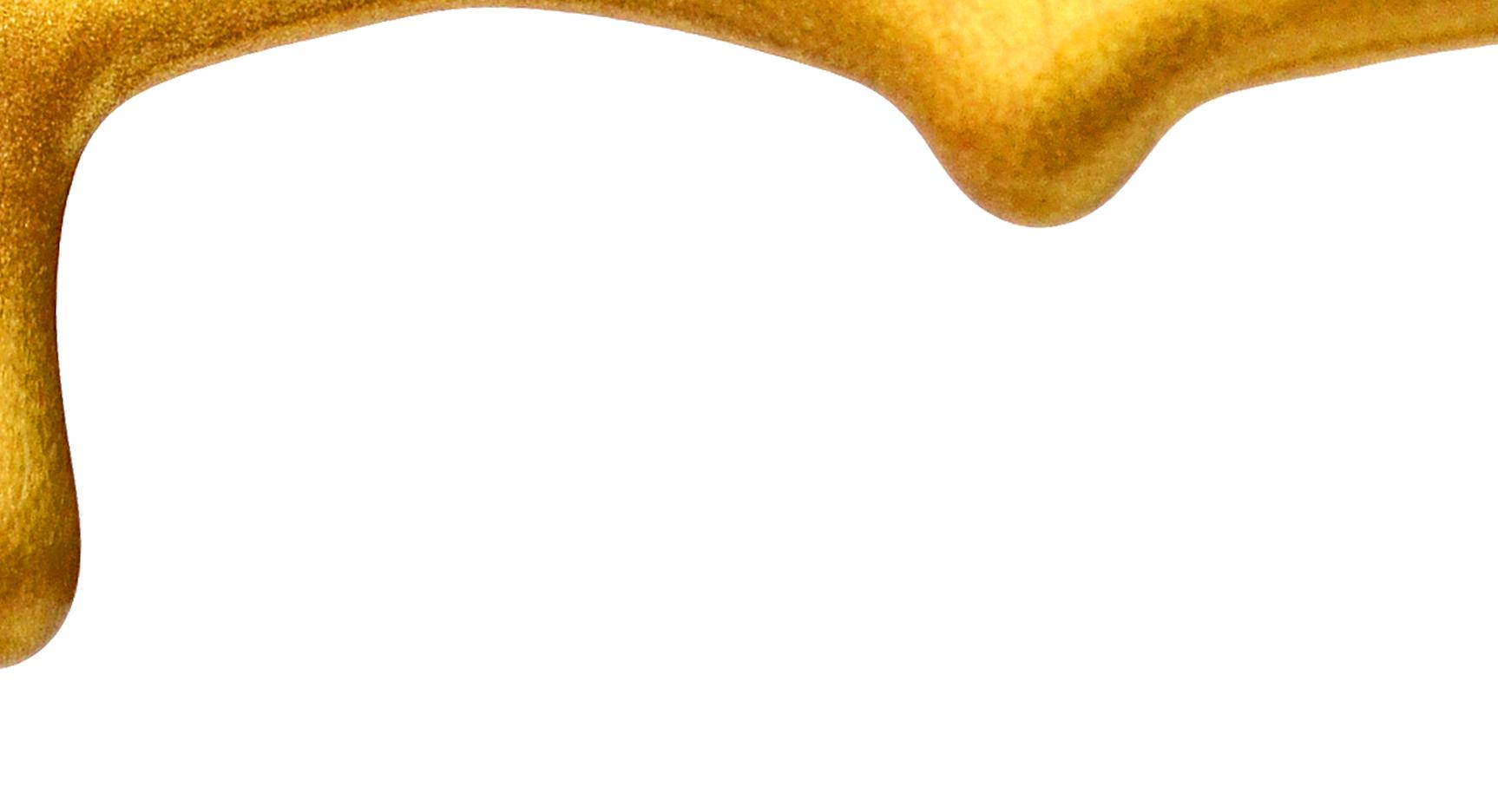
Autobond, Duplo, Konica Minolta, Kurz, MGI, Mimaki/i-Sub Digital, Scodix
Inkjet foilers are something of a cross between hot and foiling. The way the tech works is to use an inkjet head to print a UV-cured polymer varnish. This might be used as a high gloss embellishment in its own right.
Additionally, some inkjet varnishers also offer inline foiling on top. Generally they use a UV-cured polymer varnish that is then heated so the surface becomes sticky enough for foil to stick to it. So it’s not necessarily hot foil or cold foil.
 Foil-on-Toner and Laminators
Foil-on-Toner and Laminators
Advantages of the inkjet technology include being able to do variable imaging and also to do high-build 3D effects for embossing and textures, with multiple different builds on the same sheet. The result can look like embossing (and can still be foiled over), but can also create textures, or Braille to international standard heights.
The current entry level is Duplo, with the B3 DuSense. A pricier B2 model was announced at Printing United in 2022. Konica Minolta’s entry level is the AccurioShine 3600, which uses MGI’s JetVarnish technology. MGI has its JetVarnish range in sheet fed B3, B2, B1 and narrow web label configurations, in mid- to high-end performance and pricing brackets, plus the very high-end B1 AlphaJet that color prints then varnish/foil embellishes in the same pass.
Scodix is another powerful contender in the mid to high end of inkjet embellishment. Its current range of Ultra machines handle B2 or B1 formats, with up to nine functions possible on some configurations: foiling, “sense,” spot gloss, metallic, glitter, Braille, crystal, and cast and cure. The final option is variable data supported.
Leonhard Kurz, the German foil maker, acquired Swiss-based Steinemann and sells them with its own foils under the Digital Metal (DM) brand. It makes sheet-fed inkjet foilers, including the B1 format DM MaxLiner 3D. It also has narrow web equivalents for 2D or 3D foiling.
Actega

EcoLeaf is a unique filmless digital metallization technology. Originally invented by Landa (which called it Nano-Metallography), the process was sold to French coatings specialist Actega, which productionized and launched it in 2020. Initially, it is available for narrow web label presses (at about $110,000), but Actega plans to produce units in future for larger format sheetfed or web presses and possibly screen printing, either inline or standalone.
An inkjet print bar applies a special UV-cured “trigger fluid” with the desired image. The substrate is then passed through the
EcoLeaf application unit, where a nano-scale metal pigment suspended in water is applied by a roller. The pigment reacts with the trigger image to bond and form a very smooth surface layer, comparable to conventional hot or cold foils. The effect is silver, but can be overprinted in color. Unused pigment is removed and returned to the Eco-Leaf tank, contributing to estimated costs that are 30% lower than conventional foilers, with no film waste to dispose of. A degree of raised or tactile effect is possible.
Heidelberg, HP Indigo, Kodak, Ricoh, Xerox
Some dry toner digital presses have extra fifth or sixth print units that can apply either special colors, clear gloss or metallic silver (a few offer gold too). These metallic toners give a shimmer finish, rather than the high gloss mirror effect that metal foil can achieve.

Kodak pioneered this in 2008 with a fifth color unit for its NexPress, and carries this on with the current NexFinity and the relatively new Ascend (for heavyweight stocks). Kodak has a stillunique heat-expanding clear toner called Dimensional, for embossed effects.
Xerox has fifth and sometimes six units on presses from entry level MFPs up to iGen5. Ricoh has a fifth unit option on the Pro C7200sx (and so does the Heidelberg Versafire EV).
Some of HP’s Indigo liquid toner digital presses can have up to seven color stations, with white, silver and clear as “embellishment” options alongside a wide choice of specials. Colors can be printed over the metallic silver. High builds are possible with multiple rotations within the press, but each rotation costs a click, so this is expensive.
Metal PrintSuppliers
HP Indigo, some low temperature fusing dry toner presses, Ricoh, Konica Minolta, Xerox, most UV-cured inkjets
An easy way to get really attractive metallic effects without special equipment is to buy the substrate ready-foiled and print on top of that. Metalized board is common, but there are also metallized papers suited to sheet-fed presses. You could also laminate foil onto your own media.

A variation of this is soft touch, which is a color laminated board with a very matt surface that feels velvety to the touch. If you print onto this with a glossy spot varnish, raised or not, the effect is striking. Some soft touch materials are metallic, and clear varnish turns this into a mirror-bright effect.
Whatever the material, a white ink base layer image can act as an undercoat for full color printing on top, with “holes” to let the metallic or other foil effect show through, or you can print with the transparent inks onto the foil to get other color effects.
This is relatively easy for analog printing, where litho or screen process inks can be used. Digital UV-cured inkjets, especially flatbeds, work well with foil boards.
HP Indigo’s liquid toner ElectroInks can reliably print on metallized flexible media, and there’s an opaque white ink that works as a base layer.
Dry toners can be more problematic – high fuser temperatures can distort the PET plastics often used on metallized boards, and there may be an issue with conductivity and electrostatic imaging (which might be solved by experimenting with corona treatment).

Suppliers of metallized media recommend testing, and usually say the low-temperature fusing presses are most likely to work.
Suppliers
Duplo, Graphic Wizard, Morgana, Harris & Bruno, Tec Lighting, Kompac, Tresu
This analogue process works with any other process to give an overall clear coating to a printed sheet or web. There are various reasons to do this – commonly an aqueous coating is applied that is practically invisible on the finished work, but it dries quickly and so allows work to be finished sooner. It may also protect the print against scuffing after delivery.
UV-cured polymers give a very high gloss finish that is also protective, so this is popular for book and magazine covers. Embellishment is possible too - texture rollers can be built into varnishing units to give tactile finishes such as canvass or linen.
Suppliers
Chemline, Epoxies Etc, HB Fuller, Logo3Doming
This is a labor-intensive manual process that applies liquid polymer resin from a syringe or pipette over a defined shape (typically a decal sticker or badge or phone case). Surface tension causes the viscous resin to build up a “dome effect” rather than overflow. Two-part curing or UV/heat hardens it into an attractive clear raised lens over the print item.
Suppliers (flatbed/platen)
Bobst, Heidelberg, Kama, Koenig & Bauer, MBO, Uchida
Suppliers digital/laser)

Glowforge, Highcon, LasX, Motioncutter, SEI Laser, Trotec
Physically cutting out shapes in paper or board can give eye-catching effects, whether you are cutting holes in your sheets, or building up multiple layers of identical or different shapes.


Conventional etched metal die cutting can be used for complex shapes. This can be done in the same sort of platen presses as work for foiling and embossing. However, recent years have seen the introduction of affordable small rotary die cutters, that use flexible etched steel dies that attach to magnetic cylinders.
Suppliers (rotary)
Duplo, Heidelberg, Koenig & Bauer, MBO, Moll, Rollem, Standard Horizon
For short runs, personalization and variable data, there are two main types of digital cutters. Drag/tangential knife types use sharp blades in travelling heads to cut through the substrate. These may be configured as flatbeds, which can range from B3 sizes up to enormous and can take paper through to thick board. Multitool heads are often available to handle cutting, scoring/creasing, perforation etc, with the most powerful types able to handle routing in wood and some plastics. Dedicated routers can carve through pretty well any solid sheet material.
Laser cutters are another option, and can perform very fine cuts for lace-like filigree work. You’ll need a powerful laser to avoid scorch marks on thicker materials.
Lasers cannot form scores and creases, so if you need that the only answer is usually perforation or half-cuts that weaken the material along fold lines.
Suppliers (digital/knife)

Blackman & White, Cricut, DYSS, Graphtec, Kongsberg, Mimaki, Scandakar, US Cutter Titan, Zünd
At the top of the market is Highcon, with B1 format sheet fed machines that use three cutting lasers. They feature an inline creasing unit that creates extruded UV-cured polymer rules from digital data, but unlike the variable lasers, these are then fixed for the length of the run.

Your purchase of a Print MIS/ERP happens on a certain date. The journey of extracting the return-on-investment from this purchase is ongoing. We tend to overly focus on the event and under focus on the journey.
You can manifest the buying event whenever you want. There are an endless number of vendors who are willing to sell you a dream and take your money. There is no limit to the number of times you can experience this event, I’ve seen printers change Print MIS/ERPs seven times!
The event is exciting. Potential and energy are high.
“We’re finally going get rid of all our frustrations with our current Print MIS/ERP and move into nirvana with the new system.”
I never had children, but this must be what comes over mothers—they forget the pain of childbirth, the sleepless nights, and have more children. My mother had 14 children. I’m still in awe of how she did it. I was 13th and thankful she kept going!
Print MIS/ERPs are a little like children: they cost a lot, they keep you up at night, and they force you to evolve along the way.
The journey of truly adopting your Print MIS/ERP as a part of your business family is a true differentiator in the marketplace. Nobody is outcompeting anyone else simply by buying a Print MIS/ERP. The differentiation is all in the journey of extracting the ROI out of the purchase. This is not exciting, nor does it include a lot of features that demonstrate well on a tradeshow floor.
You know what determines the ROI more than anything in a Print MIS/ERP? The accuracy of the data in the system. Is the data in your Print MIS trusted by your employees? Accurate data doesn’t demonstrate well on a tradeshow floor. Accurate data is a pain in the butt to get at implementation—you know what I’m talking about. You are asked to fill out data import files to get started with your new Print MIS/ERP implementation. Do you take the time and the skilled labor from your team to make sure that data is absolutely accurate? Sadly, most businesses don’t. They literally spend hundreds of thousands of dollars on a Print MIS/ERP and then import inaccurate data to launch it.
Your people don’t trust new things. That trust must be earned. You know what drops precipitously when your people see errors in the data? TRUST. So accurate data is such an
it’s
purchasing a printmis/erp won’t solve your problems, if you’re not willing to see it through.
By
about the journey
important thing to get into the system. Then you must babysit the accuracy of data consistently forever. Yes, forever.
Jump into your Print MIS/ERP system right now and look at the list of customers in there. I bet you can find customers you haven’t done business with for more than a decade that are still being loading into search results.
Accurate data is like rocket fuel. Accurate data allows you to create automated reports that go directly to your customers without your precious labor massaging them. Accurate data allows you to make data driven decisions quickly.
Back to the event vs. the journey. The event is the first date. The journey is the marriage.
The marriage is a true relationship between you and your system of record. Your team needs to become experts at the system. The system must reflect and manage your business so your team can manage the system.
The journey is a long-term relationship. Long-term relationships are challenging. Vendors don’t add the features you need, all software has bugs. Your employees constantly complain about the system’s weaknesses. In the face of all this you’re trying to run a business and keep the system accurate.
The successful and differentiating journey of a Print MIS/ERP is one where the printer stops referring to the system as belonging to the vendor. The system is yours. It runs your business. It should be your trusted system of record. Own the system, and the journey will get a lot easier. Keep treating the system like an abusive foster parent would, and you will get the karma you deserve.
Adopt the system with all its weaknesses and warts. Succeed despite the lack of responsiveness of the vendor. Develop your own internal expertise. Reach out and find peer printers who have the same Print MIS/ERP—collaborate on best practices.
Own it and you will create a differentiator inside your business that others can’t steal or easily copy, because it’s hard work.
When your customers are looking to boost sales with wide-format graphics, should they encourage their customers to look up or down? While much of the fanfare in wide-format graphics goes to signs, banners and floor displays, floor graphics have a powerful track record of sales lifts, too.
What’s behind the success of these sticky ad spaces? Maybe it’s that so many shoppers are looking down at their phones in the retail aisle that floor graphics are now at eye level. Or maybe it’s just because floor graphics are unexpected to the shopper’s eye. Regardless of the reason, they work. Let’s look at some of the numbers behind those results.
According to research by the Point of Purchase Advertising Institute, 64% of shoppers stop and engage when they see floor graphics. Not only do they notice, but shoppers stay longer in the featured product area. Indeed, POPAI found that, in one study, the number of shoppers stopping in the product area for more than eight seconds increased by 280%.
Other results from the research? Products promoted with floor graphics and mats showed sales increases of 10% to 13%. For grocery, a brand can expect a 16% sales increase using floor graphics.
Another study at the Center for Advanced Retail and Technology reinforced these findings. Its research concluded that the use of colorful, custom floor graphics (in this case, those used to sell cereals) resulted in a 17% lift in sales compared to visual merchandising that did not.
Furthermore, 11.2% of shoppers who made a purchase from that product area were new or re-engaged, defined as not having bought the featured brand of cereal in the previous six months.
Increasing Sales by 20-50%
Multiple printers, including Windo Displays, Go To Shout, and Wallace Print, cite the same research that when a store uses floor decals in the aisle, sales increased 20-50%. Brand image also improves.
Case studies reflect these realities “on the ground” as well. Consider the following three examples:
A national retail chain reported extraordinary success after employing floor graphics to market a name-brand insecticide. After placing multiple six-foot-square graphics of bugs “succumbing to Raid” on the store floor, sales rose 91%.
In a study on behalf of Flexcon, researchers looked at the impact of floor graphics on the sales
of garden supplies and work wear at Klems, a department store. They found that large floor graphics showcasing Carhartt work clothes led to a 31% increase in sales.
One year later, researchers used the sales floor of the same department store to study the impact of brightly colored floor graphics showcasing Scott’s Miracle-Gro products, leading customers toward displays at the back of the store. This case study, too, had compelling results: 29% sales increase for Scott’s Miracle-Gro and an overall sales boost of 18% for the gardening department.
In another example, Specialty Graphics Solutions collaborated with iQ Credit Union to create floor graphics for a quarterly marketing campaign. These graphics featured animal paw prints, along with informative messages about the credit union’s services, to guide customers through the financial institution’s local branches. The campaign was so successful that iQ extended its use for an additional month beyond the original plan.
On its blog, Horizon Sign Company cited an older but still relevant study conducted by Emerald Group Publishing:
The floor graphic was as simple as they come—just a red arrow pointing in the direction of a particular product display—but that was all it took to make a big impact on in-store buyer behaviors and decision-making.
Why did the floor graphics in this study work so well? In explanation, the print shop cited re -
search from the International Journal of Business and Management Invention.
While some in-store ads can seem invasive, especially those that block walkways or otherwise take up space . . . floor graphics have a “high level of [consumer] acceptance, as they are not interfering in the customer purchase.” This higher level of consumer acceptance is associated with better ad engagement and recall, as well as higher conversion rates.
FM Event Promotions is another business promoting the value of floor graphics. On its website, it cites the results of a study that found that when a business uses aisle decals, nearly 25% of consumers stopped to look at the decal while shopping, brand reputation increases, and sales rise 25-55%.
From survey results to real-world case studies, it’s clear that floor graphics can be a powerful tool. The data consistently demonstrates that these eye-catching tools can capture customers’ attention, guide them through the store, and ultimately drive purchases.
Suddenly, shoppers with their noses stuck to their cellphone screens just might be a good thing.
It could be argued that wide format is a fairly mature market, with a lot of the mass adoption that we had been seeing in the 2010s on the part of commercial printers largely over. Where does Canon currently see the biggest growth in the market for wide-format printing equipment?
When you talk about a mature market, it has been around for a while, but being involved with the aqueous space and the UVgel and flatbed space, people say the same about aqueous, yet you continue to see more and more printers sold each year. So, you see versatility on the low end where people can do more. And definitely, I think a focus on the graphics side is that capability to do more for sign shops. You see them dealing more and more with consumers and offering them different types of products for their businesses. They want to offer their customers as much as they so they can be a one-stop shop. So there’s a strong focus on how we can help these customers, print service providers produce more for their customers.
What are some of the recent Canon product announcements in the wide-format space?
Look at our Colorado product, which is really generating a lot of interest within the industry. Back at PRINTING United in October we heard this buzz with so many people wanting to see it and learn more about it. It was launched a few years ago, but I think it’s really starting to establish a name within the industry.
So really the biggest launch last year was enabling something called FLXfinish+ for the Colorado, enabling you to have that gloss and matte finish within one print. It gives the printer a lot more flexibility in what they can do, whether it’s a sign or wallpaper or other décor.
We first showed that at ISA last year, but really getting people to understand it, to learn more about it, and how they can sell that to their customers has really been the main focus.
I think when we look at products like Arizona as well, you continue to see more and more applications that it’s capable of producing. Even getting more into woodworking, and what you can do when it comes to designing rooms and offices. Graphics just continue to grow and more applications pop up every day. It certainly keeps us busy.
What have you found to be some of the up-and-coming applications and new areas that customers are trying to get into that they may not have considered before?
The ones that we continue to hear over and over are wallpaper and other types of wall décor. The wallpaper application is just fascinating to me because of the FLXfinish+ being able to have that spot gloss type of finish. So it gives you a lot of versatility. You see flooring that can be done on Arizona.
Window clings are something that we’ve heard about for a long time, but now we can use a sandwich type of technology where it’s double-sided and you have a layer in between. So you see one image from the outside of a retail shop, then you come inside and see another image on the other side. Those are some of the things that we’re hearing more and more.
I’ve heard anecdotally that wide-format graphics producers have been expanding to things like labels and packaging and even textiles. Have you found your customers looking into these areas as well?
Absolutely.We hear that a lot with many different technologies here at Canon, but you see it with Colorados. You go to trade shows and you see different packaging and label applications. So that’s an area to keep an eye on. It’s going to grow in demand.
We just did our annual Printing Outlook report and our annual industry survey, and we discovered in the past couple of years that interest in flatbed UV printers has really started to spike. Have you found a corresponding increase in the Arizona series versus some of the other series?
Absolutely. PRINTING United was something that proved that. There’s just so much flexibility in what you can produce on that type of equipment. We’re going to different types of shows in different types of industries. I talked about woodworking, and you see what people are able to produce on a flatbed, and they’re intrigued. Certainly flatbed technology in general has been around for a bit, but people come to trade shows within an industry and they’re surprised by some of the applications that they see there.
And I would imagine that it’s also the case that a lot of manufacturers, Canon included, are expanding their portfolios, so there are more options at different production levels and different price points.
At the low end, we deal with aqueous all the way up to flatbeds, and people grow out of what they have. They want higher speeds, they want to be able to produce more. I was visiting a flatbed customer in Texas a couple weeks ago, and they’re looking to grow so that they can improve their revenues by producing more within a day.
So when we look at our portfolios, we try to start from the entry level. I think we have a printer that you can find online now for $795, a 24-inch printer, all the way up to your high-end flatbeds. Definitely Canon has a strong focus on graphics, but a strong focus on production as well. So we’ll continue to offer our customers more and more solutions as they grow their businesess. We can help them grow.
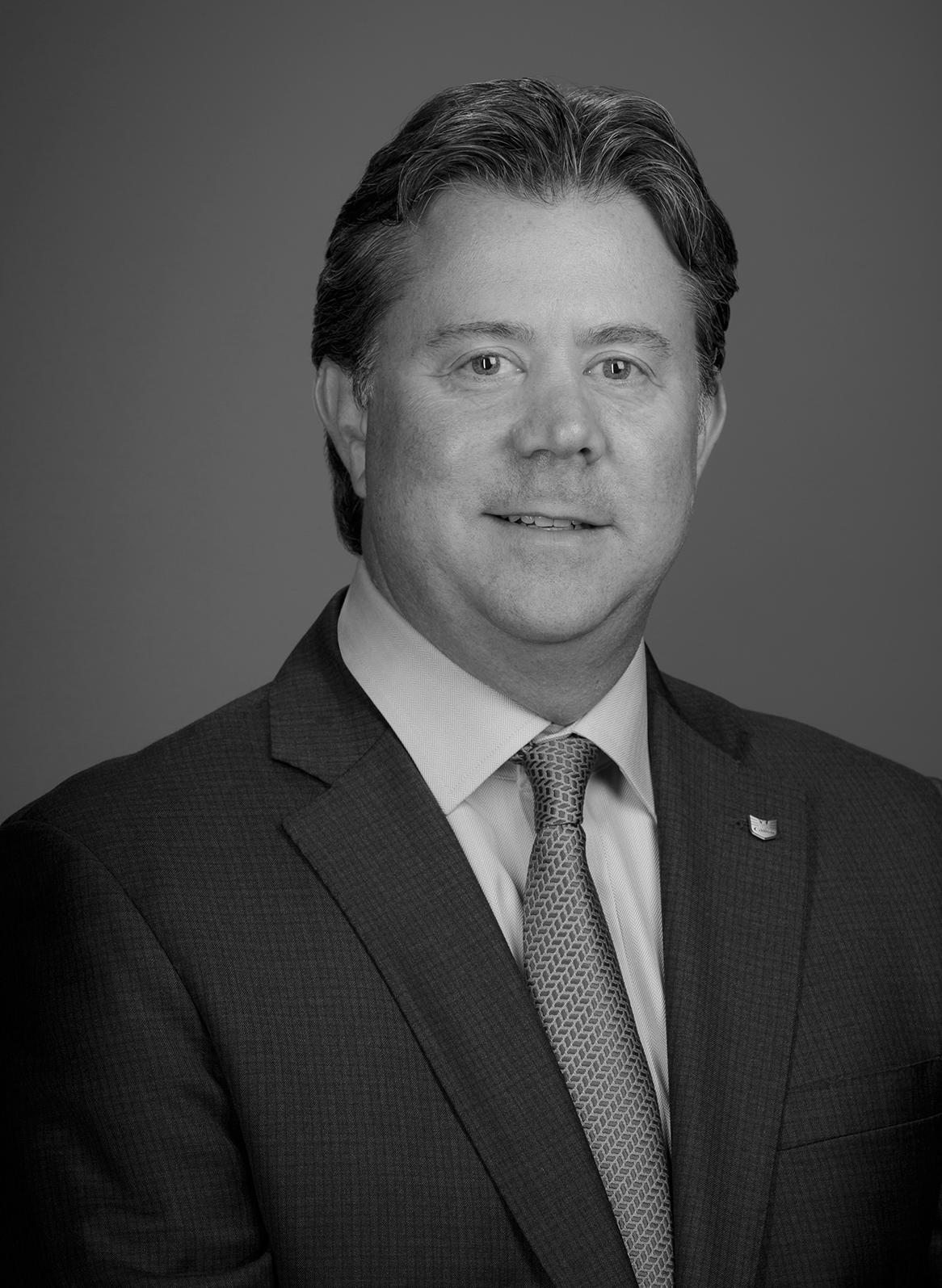
Everyone is talking about automation these days. What does automation for wide-format mean for Canon and its customers?
Automation can mean so many different things, right? There’s software automation. Automation could be, when we look at Colorado, putting on jumbo rolls on the front and the back so that you can do long production runs without having to change rolls. On flatbeds you see different flow tables taking products off flatbeds to cutters. There are so many different types, and I think you see that growing. Every year there’s more and more automation.
Certainly from the Canon perspective, that’s something that we’re looking at. You talk about production customers, so the more automation we can provide them, once again, it’s more that they’re able to print within a day. It’s something that we’re certainly trying to provide solutions for and point people in the right direction so that they can improve their overall operations.
Another top-of-mind issue—that also can mean different things to different people—is sustainability. What does sustainability mean to Canon in the context of wide-format printing?
Sustainability is important in many different ways, from media you’re using to the electrical. Once again, there are so many different aspects of sustainability. It could be using recycled types of media, being able to easily dispose of inks in a certain way. You’ve heard people talking about it for many years, and I think it’s something that will continue to be an important topic.
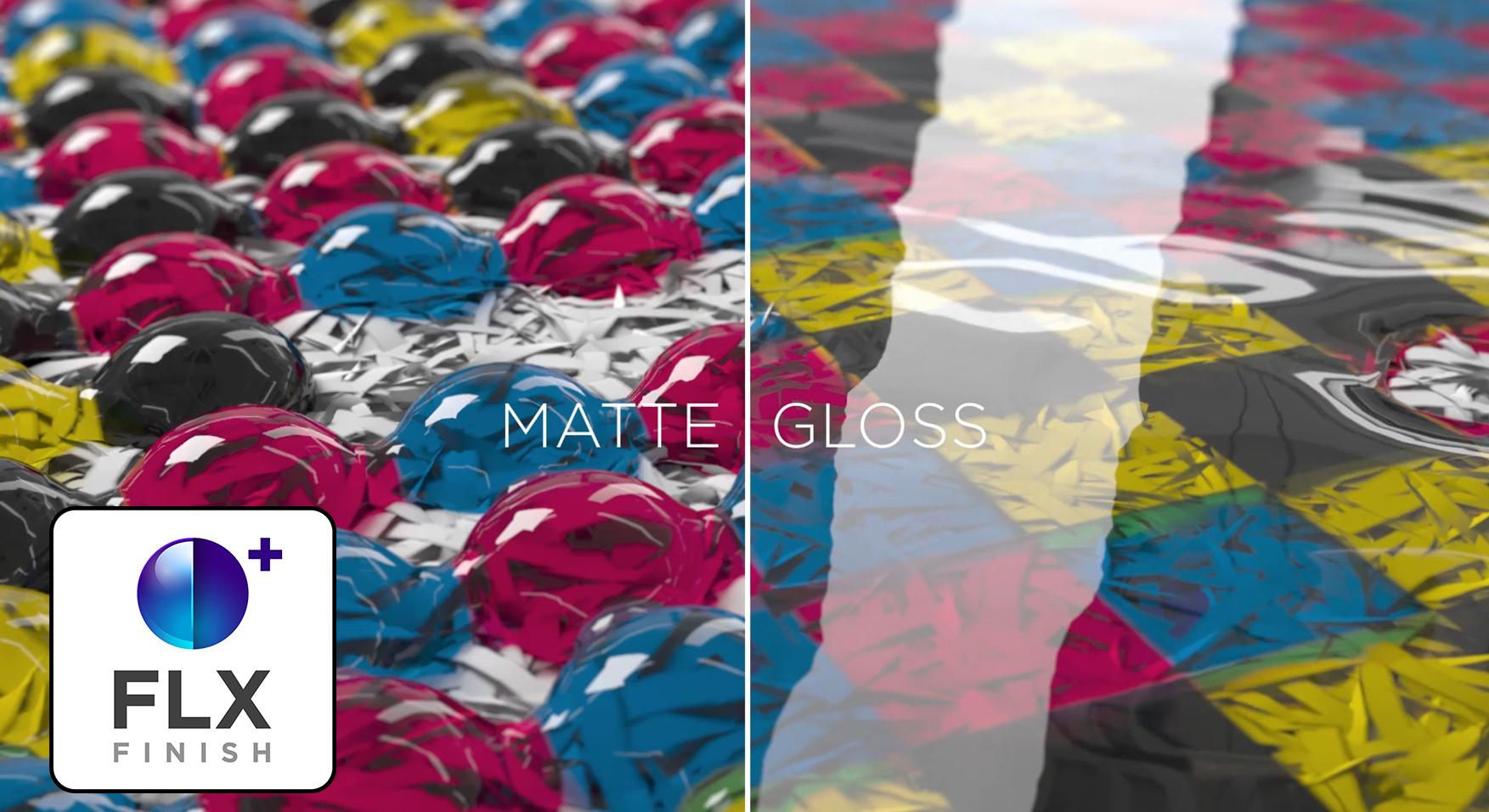
Any final thoughts?
I just want to add that Canon is a provider, like I said before, that starts at the very low end. Someone who just has to do 24inch posters, whether it’s a retail shop or a small print-for-pay business. We offer solutions from roll-to-roll, to flatbed, and we even offer some dye-sub solutions and cutting solutions.
So for those who are moving into large format, Canon has many different solutions. I think people don’t realize the breadth of offerings that we have out there. We definitely love to sit with people and explain to them all the solutions we have, because a lot of them can be used together within different print service providers and in other environments. I think people don’t realize the huge line that we have.

Some might shy away from a blank canvas and the enigma that emptiness creates. But for those with the creative capacity to think outside of conventional borders, all it takes is the right tools to produce a truly customized tapestry of impressions.
It’s no different in the interior décor space where possibilities are plentiful, and opportunity is endless. According to Smithers Pira, by 2024 the printed signage market will be worth an astounding $54 billion. Dive in even further and you’ll discover that the digital printed wallpaper sector is expected to rise from $2.53 billion to $7.74 billion in 2023.
This is no longer a marketplace reliant on classic wallpaper and traditional analog technologies. Imaginative print services providers (PSPs) need access to highly capable wide format digital printing technology that excels at short and customized runs, supplies an efficient end-to-end printing process to accommodate interior décor requests on a wide variety of substrates, and appeases the rising pressure of faster turnaround times.
The modern marketplace counts on PSPs to deliver premium, luxurious-looking interior décor productions with dynamic color depth, distinctive embellishments, unconventional patterns, and abstract designs. Along with these features, the technology implemented must clearly meet the environmental needs of the commercial market in highly sensitive settings such as hospitals, schools, and other public places.
Yet, there’s more to it when you dig beneath the surface. For instance, in the wallcovering space where multiple tiles are printed and installed side-by-side, strict panel-to-panel size and color consistency, along with reliable and repeatable color production over time, is critical. Dimensional stability plays a crucial role as
well, while ink durability helps maintain a high-quality print and reduces the need for lamination, additional costs, and job delays.
Turning to powerful technology, like the productive and cost-effective Canon Colorado printer series that can help increase efficiency, expand output, and deliver outstanding media versatility. Utilizing the system’s GREENGUARD GOLD and AgBB-certified UVgel ink technology can help to differentiate your output. Inside the printheads, ink is heated, transformed from gel into liquified ink drops, and then immediately returned to a gel state once pinned to the media. This intuitive process provides sharp color consistency and repeatability, abrasion robustness, and dimensional stability fit for both indoor and outdoor use on a wide range of media.
Adding in Canon’s latest innovation, the FLXfinish+ technology, can take your creative endeavors a step further in maximizing the UVgel advantage by generating a premium spot gloss and matte finish in a single pass without needing to change inks or media, or having an extra varnish channel. The deep matte finish or smooth, mirror-like gloss provides true color depth and creative impact, while helping to increase efficiency and lower costs when compared to the standard serial print process that often puts a strain on resources.
So, while you may have a firm grasp on your creative concept, access to highly capable technology can be the true facilitator in fulfilling your vision and putting the finishing touches on your original productions.
To experience the power of Canon Solutions America’s Colorado printers and the FLXfinish+ technology in the wallcovering space, https://csa.canon.us/FLXfinishPlusWallcoverings
Sustainability in printing is an increasing priority across the world, with print buyers paying more attention to the carbon impact of all their business activities. This can provide a demonstrable commercial advantage for those print systems and operations that give a genuine reduction in environmental impact.

As the industry confronts 2023, booming energy prices in Europe are placing a new imperative of energy efficient printing. Smithers—the leading consultancy for the paper, print and packaging industry—shares its latest insights into the short- and medium-term impact of the drive to greener printing.
Digital (electrophotography and inkjet) OEMs are actively looking to exploit the demand for lower energy use in the print room. In contrast to offset litho or flexo printing, digital means significantly less make-ready, which saves time, energy and ink. For analogue press operators, these are typically amortised across a long print run, but following the pandemic, run lengths are trending downwards— with shorter more repeat orders with quicker turnarounds. The main rationale for this is tighter cash control by print buyers and the desire to reduce inventory, but such benefits can also be spun as a sustainability gain, especially in reduced waste.
Furthermore, inkjet presses have continued to improve throughput rate and hence their commercial viability at longer print runs, and now HP Indigo’s new V12 press with LEPx configuration is promising similar potential with toner.
Analog OEMs are not blind to this trend and are increasingly fitting new automation and low-energy equipment to their print lines. One option for larger converters is to recycle production line exhausts. Smaller converters may not have that same opportunity, but can take smaller steps to reduce energy use. A parallel trend is radiation-curing work cutting energy use at curing stations via a new generation of low-energy UV curing lamps. There are competing claims over which equipment and configurations delivered the greatest reduction in carbon input. Sustainability targets are now a core part of print buyers’ corporate commitments. This is generating more interest in objective, agreed lifecycle analyses that track all factors in delivering print work—energy, consumables, transport/haulage, waste, etc.—to enable customers to select a greener print partner.
Within the wider sustainability debate, the leading impetus is to replace plastic, especially single-use plastics, with alternative more recyclable materials. For print this is seeing some work transition back to fibre-based substrates. The trend is especially marked in packaging, where packs and labels now form a real-world touchpoint by which shoppers can judge the seriousness of a brand’s commitment to the planet. For printers, the impetus is to manage any transition from plastic to paper, with no loss of print quality. On press, this means the ability to handle heavier media and print effectively on less planar surfaces, which supports the adoption of inkjet. Many of the latest presses

are being built to handle heavier materials, including kraft grades now being seen in customer-facing packs.
This is happening as packaging is already a leading growth target for most OEMs.
In North America, publication volumes are continuing to decline, and the outlook for graphics/advertising is decidedly flat. In contrast, packaging work (excluding labels) in the region will be worth $99.25 billion in 2023, and is forecast to see real growth, +2.1% year-on-year by value, through to 2027 (The Future of Digital vs Offset Printing to 2027).
As recyclability is emerging as the most important metric for brand owners in packaging, it is generating new impetus for effective de-inking technology.
If inks or other components such as coatings cannot be removed, it can compromise both the physical appearance and material strength of recovered pulp. This is stimulating new R&D spending, as well as a move away from decorative effects that are harder to remove, such as metallic embellishments and glitters.
The vision of a circular economy in materials is leading to more scrutiny of conventional publication inks—especially the migration of mineral oil hydrocarbons—as posing a potential health risk if recovered pulp is used in food contact.
In Europe, Germany has passed a law specifically safeguarding against this issue. In France, these are now prohibited in packaging, and since Jan. 1, 2023, in consumer-facing advertising materials and catalogs as well.
Another contribution ink companies are making is the broadening in range of aqueous (water-based) inks in their portfolios, especially as replacements for solvent-based formulations. The main markets for water-based inks are on flexo and inkjet presses, with a smaller segment in gravure.
Through 2022, a series of aqueous inkjet systems were demonstrated, including Ricoh’s forthcoming proposition for commercial print, the Pro Z75 B2 sheetfed press, and Xaar’s Aquinox printhead, which is targeting ceramics, coding and marking, textiles corrugated board and other packaging substrates.
In 2022 Smithers projects water-based inks sales just topped $5 billion, according to its report, The Future of Water-based vs Solvent Printing to 2027, compared to $7.67 billion for solvent-based inks. The aqueous segment does have the fastest growth forecast, +5.6% year-on-year to 2027 (by value); while solvent inks will grow at just +1.3% year-on-year, trailing the market average.
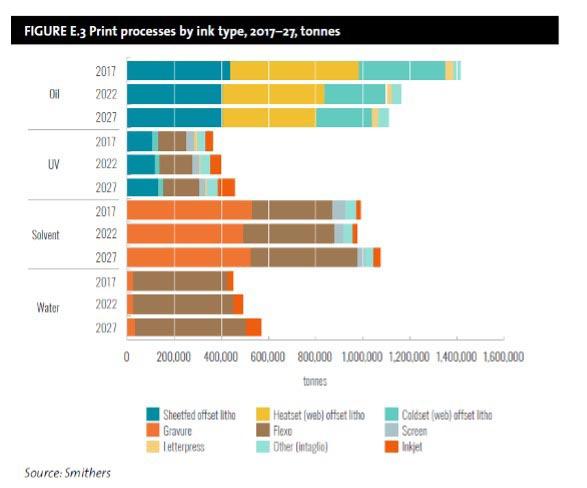
The main factor retarding the move to aqueous inks is the established market for solvent printing in flexo packaging, and water-based inks’ inferior performance on polymer substrates used for flexible packaging. Some headway is being made for these in developed markets, especially as and when packaging converters transition to more absorbent paper substrates.
Across all ink types, rising raw material costs is combining with moves for greater supply chain transparency, and where possible, a reshoring of supply. As these post-pandemic supply chains mature, they can help reduce the damage done by ingredient sourcing in less regulated countries and confront other issues, such as exploitation of child workers.
Smithers publishes a complete suite of market reports covering all traditional, digital,and diverse high-growth segments of the print industry. Its most recent study—The Future of Water-based vs Solvent Printing to 2027—is available to purchase now from Smithers.
John Nelson is an award-winning editor and journalist working in the market reports and consultancy business of Smithers. Here he covers market and technology developments across multiple technical and commercial segments; including home and personal care, sustainability, packaging, printing, paper, nonwovens, rubber and tires.
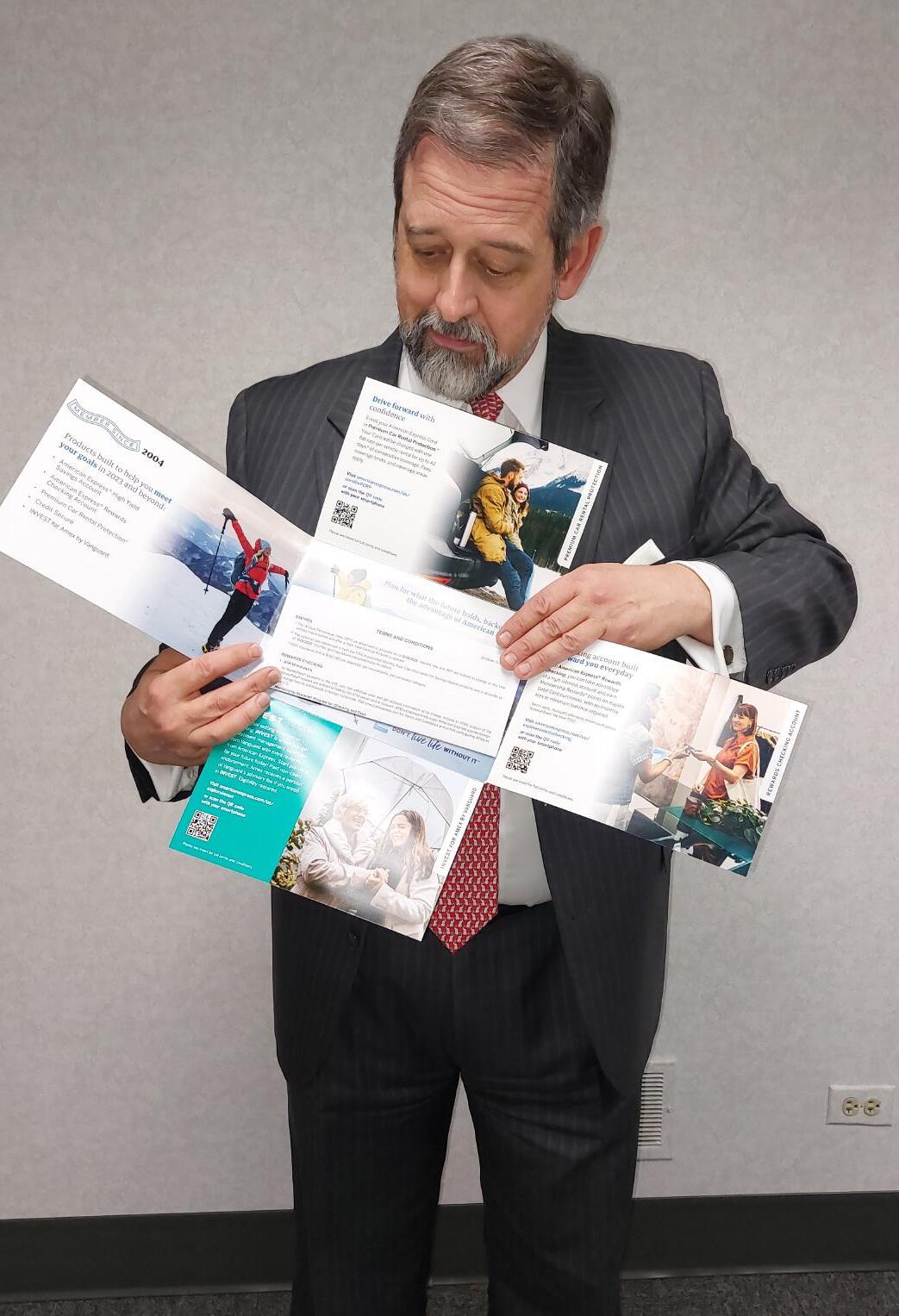 By Steve Johnson
By Steve Johnson
It amazes me how many printing companies, marketing agencies and vendors to the graphic communication business are all selling the use of print to their clients yet do not employ print themselves to market their services.
Kudos to the Great Lakes Graphics Association, sponsor of the Graphics Excellence Awards, to my knowledge the largest regional contest for print quality in North America.
Sure, GLGA sends out daily email blasts to their membership, but they also publish a quarterly magazine. When their annual contest entry deadline rolled around recently, I not only received the usual email notifications but also a mailed invitation with a handwritten note from the director inviting me to enter again this year.
But wait, there’s more. I received an oversized postcard with a color picture of my winning entry from last year on the front and details of my award. Variable data printing at its finest, truly personalized with useful information.
Instead of telling me that I could be a winner, this mailer reminds me that I already have what it takes, and shows me. You bet I’m inspired to enter again this year.
In many cases your best prospects are your current customers. Great Lakes Graphics knows this, and so does American Express, who recently sent a big-budget mailer to their current cardholders extolling the virtues of additional financial products such as banking and insurance.
Amex has the data to know who the big spenders and big earners among their clients are, so they spared no expense soliciting new business using print. This 6”x9” mail piece unfolds to 18”x27” and uses diecutting, clever folding, gluing and personalized messaging. It opens to what is essentially five different panels, one for each product, each with its own headline, ad copy and QR code.
The fine print (required for financial offerings) is relegated to a
legal-size sheet double parallel folded, glued and nested inside the folded mailer where it doesn’t interfere with the glossy messaging.
Of course Amex already touts these services via email blasts, statement inserts, user apps and customer dashboards, none of which have nearly the pull of a good old-fashioned well-designed mailer. They’re going after the big money, and they’re willing to spend more to make more.
Print isn’t cheap. Done properly, it looks, feels and even smells upscale. Of course, elegance comes with a price, but there is an exception to this rule: you.
If you are reading this in WhatTheyThink magazine, you are quite likely a printer yourself. For the price of a little paper, you can produce the most extravagant of marketing pieces.
Go wild. Showcase your abilities. Demonstrate your excellence by showing as well as telling. Let prospects and clients see for themselves that you practice what you preach.
Share your work with me and you may even earn kudos from Johnson’s World.
This article is the first in a series on inkjet for textile printing. It is intended for companies not currently involved in textile printing other than signage. The goal is to assist companies to evaluate, optimize and grow their businesses using inkjet with a focus on roll-to-roll inkjet textile printing, choosing the best technology and equipment fitting their specific needs. It’s essential to consider the production process and its distinct but related stages getting the best results from a digital textile printer.
Inkjet textile printing offers a number of advantages over traditional printing, including speed, shorter lead times, customization options, short runs, unrestricted repeat sizes (in conventional printing the design repeat depends to the fixed circumference/size of the print screen), cost reduction and flexibility. These advantages can result in the rapid introduction of new designs that can be economically produced at shorter run lengths, with accurate printing delivered in a reduced turnaround time.
Current market conditions present new opportunities due to accelerated reshoring and the ability to produce locally in smaller, highly customized runs with exquisite designs, eliminating all that back and forth transportation around the globe.
Inkjet technology can help, not only to produce more variations of one design, but also to produce a better, more eco-friendly product. Sustainability and print-on-demand will be the key points for the future. The motive of digital textile printers are high-quality prints, short runs, flexibility and customization while mitigating the environmental impact.
Whether this makes sense for you and turns a profit depends on your ability to match the print quality and price expectations of your customers. Inkjet textile printing gives you the chance to
make innovative, unique products that take advantage of the creativity of consumers and the maker community. You are able to manufacture in units of one and to manage design diversity.
Digitalization of the entire supply chain for design, workflow automation and production is available and highly recommended for getting maximum benefit. However, it should be noted that there is a real “sweet spot” and quite a narrow path to perfection where inkjet textile printing works well. If there is anything that is slightly outside of this path, then the process mostly won’t work at all. A lack of knowledge and expertise is often the underlying cause.
For manufacturing end products, cut-and-sew operations are essential as well. Finding and hiring people with sewing skills is a continued challenge.
Let us start with evaluating the top questions below, and determining whether your business is a good fit for inkjet textile printing.
First, consider your target sales market (e.g. fashion, sports, home textiles, home decoration, upholstery, etc.,) the target segment (premium, mid, budget), where you want to offer and finally, your stance regarding sustainability. The final product, as well as its positioning will set the requirements for the printed fabric regarding physical and chemical properties; think about washability, resistance against light, rubbing, tearing and so on.
This in turn implies the choice of material, woven or knitted, elastic or stable, narrow or wide, light or heavy weight fabric, fabrics with use of recycled and ecological fibres.
Based on the fabric choice with the target sales market in mind you’re looking for a suitable printer and a suitable application, this includes the printhead / ink choice.
Also, take a critical look at the existing knowledge within your company. For example, are you familiar with wet textile processing? Of course anything can be learned but don’t underestimate the time and effort to master it.

Your budget may need to include peripheral equipment in addition to the printer. If you go for a “dry” printing process, meaning no wet pre- or post-treatment required, like pigment or dye sub printing then only some dry heat fixation post-treatment is necessary and probably a calendar is already available.
In contrast, with a reactive, acid or direct disperse printing always wet processing (such as pre-treatment, steaming and washing) is necessary requiring appropriate machinery. For these wet processing machinery, you have to calculate with roughly the same budget as for the printer.
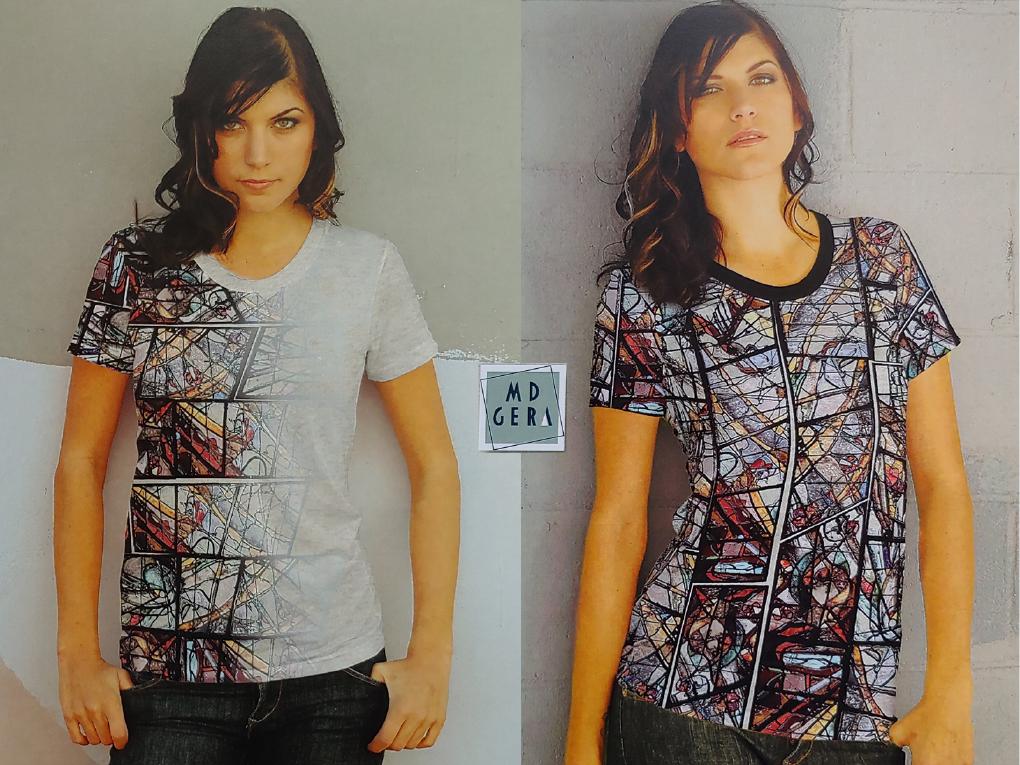
You will also need software for eventual designing processes, color measuring and data support across the several production steps. Depending on the kind of manufacturer you are and the services you (like to) offer, your approach would be different. For example, are the designs yours and you can control the specifica-
tions or are you used to work as a contract printer? Do you need to provide sampling or prototyping in addition to production? Are you a streamlined textile mill with existing infrastructure or a print shop where footprint and power supply is an issue? Do you have knowledge about textile processing or can you hire this? Depending on the initial situation, the focus is different. What is advantageous for one company may not be so for another.
The final product, as well as its positioning will set the requirements for the printed fabric.For manufacturing end products, cutand-sew operations are essential.
in Print: The Premier Press story

You'll laugh, you'll cry, you'll walk away moved & empowered

Sponsored by Plan Prophet, Pat McGrew and Ryan McAbee talk with Plan Prophet’s Lemay Sanchez about the company’s growth, enhancements to the platform, and the company’s annual Champion Summit users event.


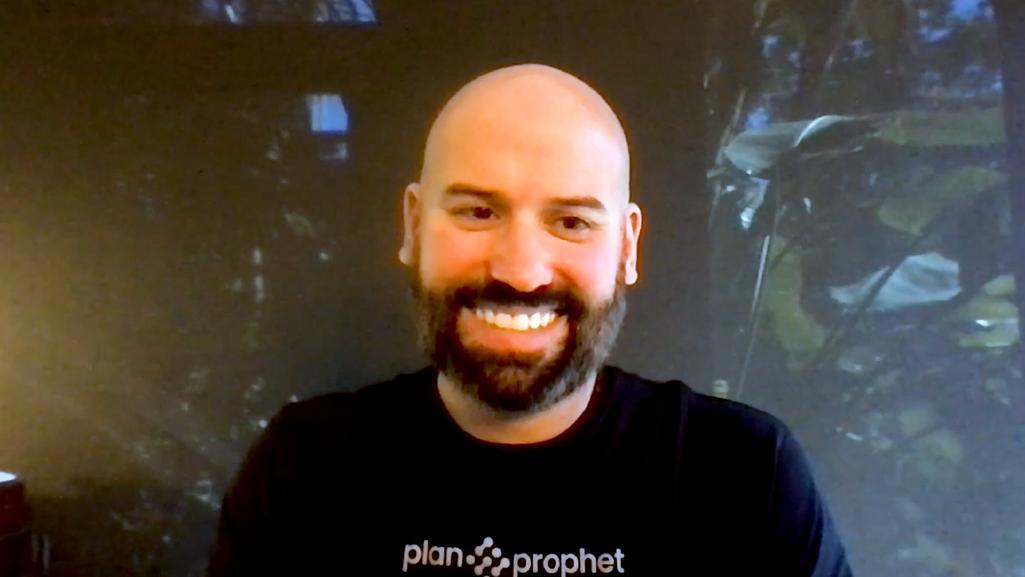
The Target Report: SupremeX Acquisition of Vista Graphic Communications
Frank talks about the WhatTheyThink Printing Outlook 2023 report. He traces a continuum from a 2000 RIT report and notes that the industry is now on a trajectory that will see growth for the next 20 years.
Stewart Emerson, President and CEO of SupremeX, discusses their recent acquisition of Vista Graphic Communications with Rod Bristol, a Director with Graphic Arts Advisors.

In this edition of the ongoing “What’s Up with WhatTheyThink?” video series, Eric Vessels speaks with WhatTheyThink’s Managing Editor Richard Romano to get some insights into WhatTheyThink’s Printing Outlook 2023 report.

Kerry King, Senior Director, Process Innovation for Textiles & Wallpaper, Spoonflower/Shutterfly, shares her thoughts on the changes and advances we have seen in textiles and home decor.
 Plan Prophet’s Lemay Sanchez on the Champion Summit
Printing Outlook 2023 Preview
Frank Looks Out
Daniel Erni on the Future of Hunkeler
Textiles Expert Kerry King Discussed the Future of Sustainable Textiles
Daniel Erni talks about his new role as CEO of Hunkeler and the company’s vision for future innovation.
Plan Prophet’s Lemay Sanchez on the Champion Summit
Printing Outlook 2023 Preview
Frank Looks Out
Daniel Erni on the Future of Hunkeler
Textiles Expert Kerry King Discussed the Future of Sustainable Textiles
Daniel Erni talks about his new role as CEO of Hunkeler and the company’s vision for future innovation.






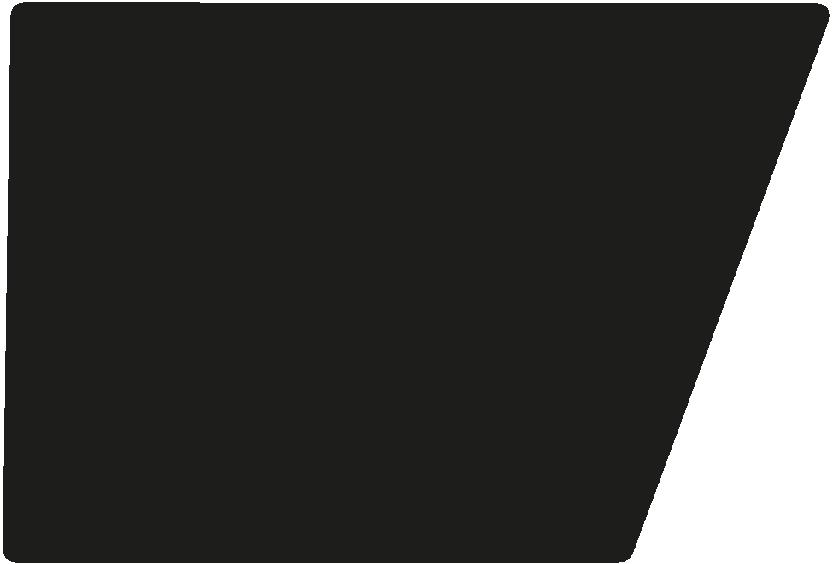





National Print & Sign Owners Association (NPSOA) is an organization dedicated to serving the needs of sign and print owners across the country.


1. ACCESS TO INDUSTRY RESOURCES: Take advantage of a wide range of industry resources including: educational materials, best practices, & ample networking opportunities. Stay up-to-date with the latest trends and techniques within the industry and grow business.
2. COST SAVINGS: Exclusive discounts on products and services from a variety of industry partners including: suppliers, manufacturers, and service providers. These cost savings can help improve profitability and stay competitive in a challenging market.
3. COMMUNITY AND SUPPORT: Connect with other professionals in the industry, share ideas and experiences, and build relationships that can help nurture business success.
If you are an owner, you need to join!
npsoa.org/members/join-renew-npsoa/
